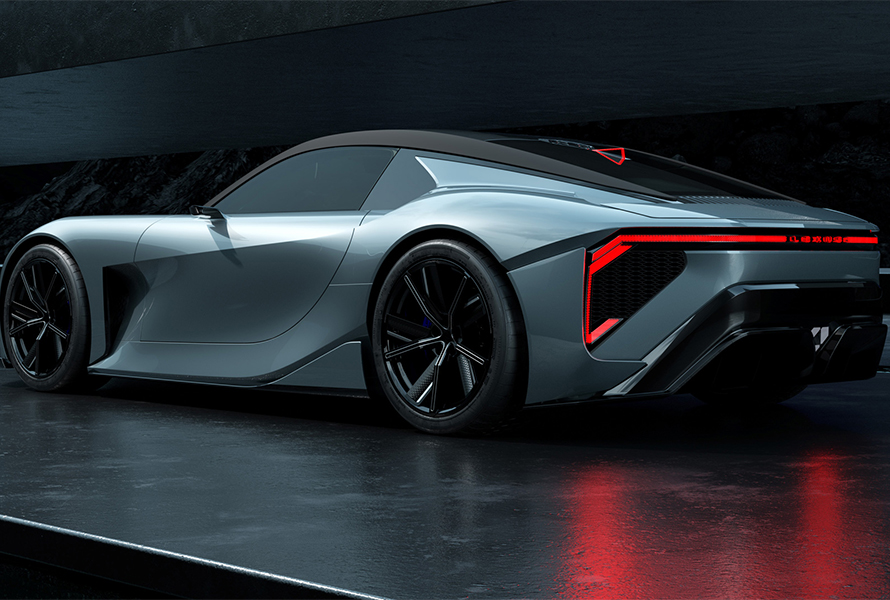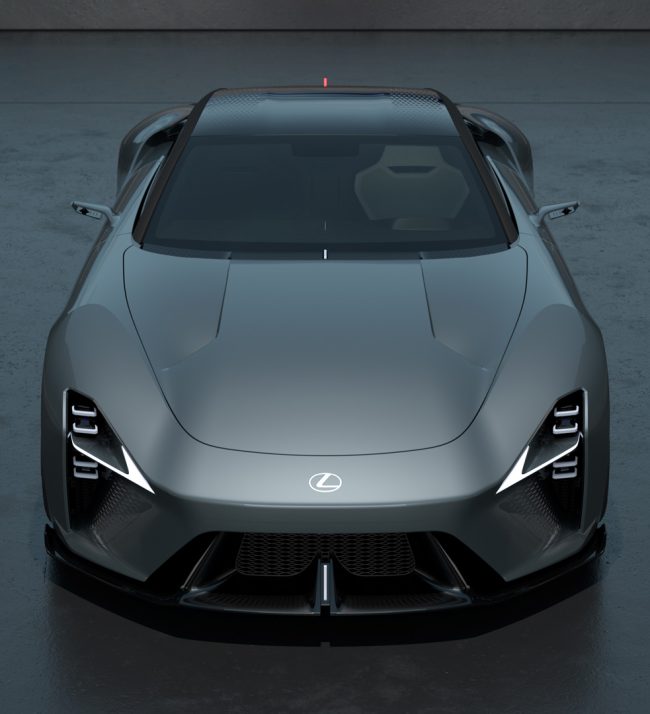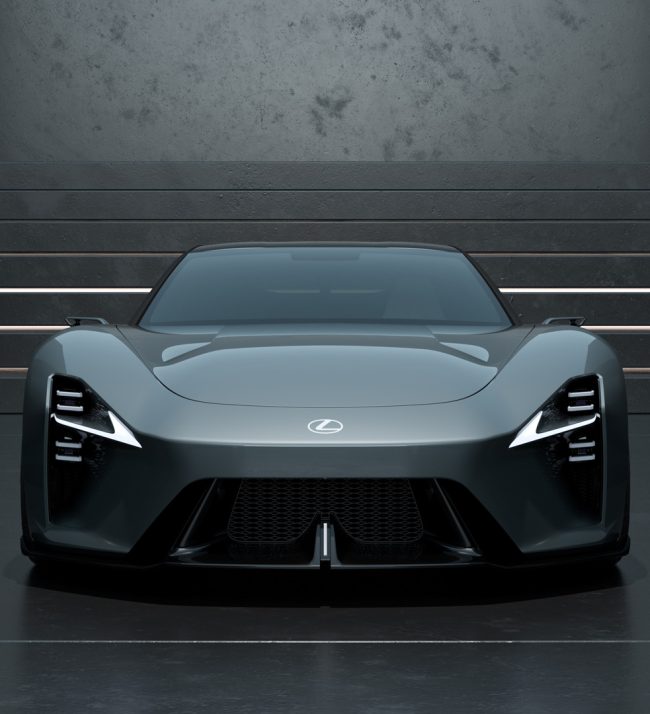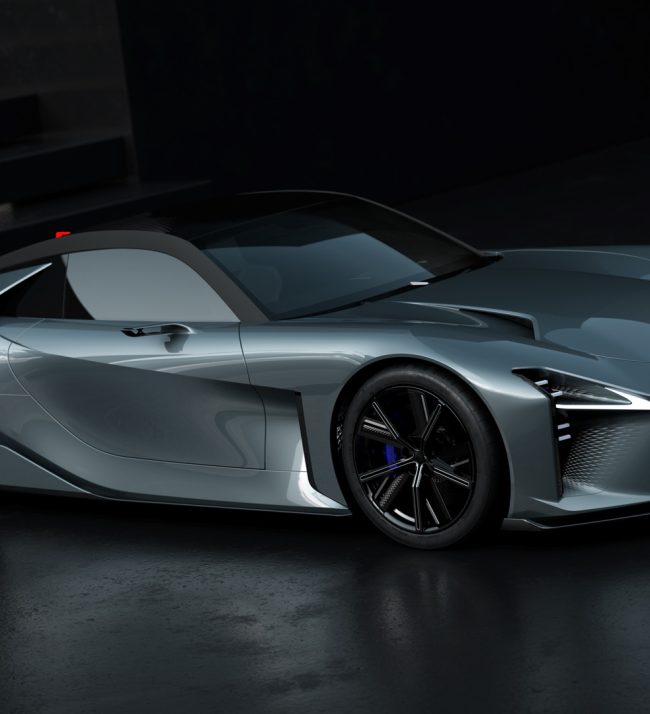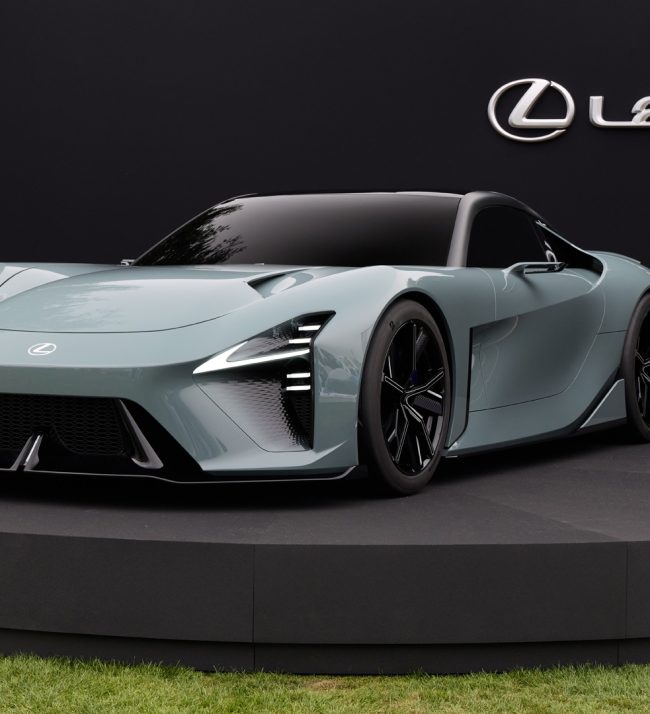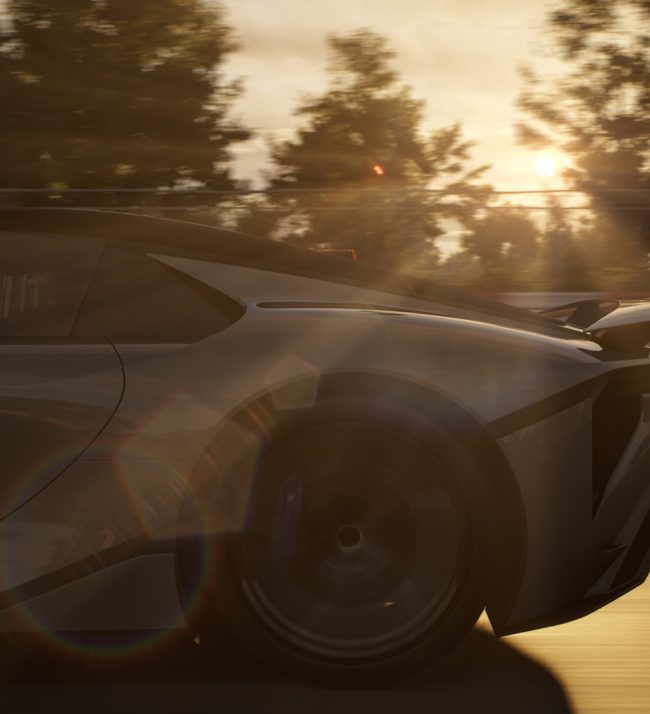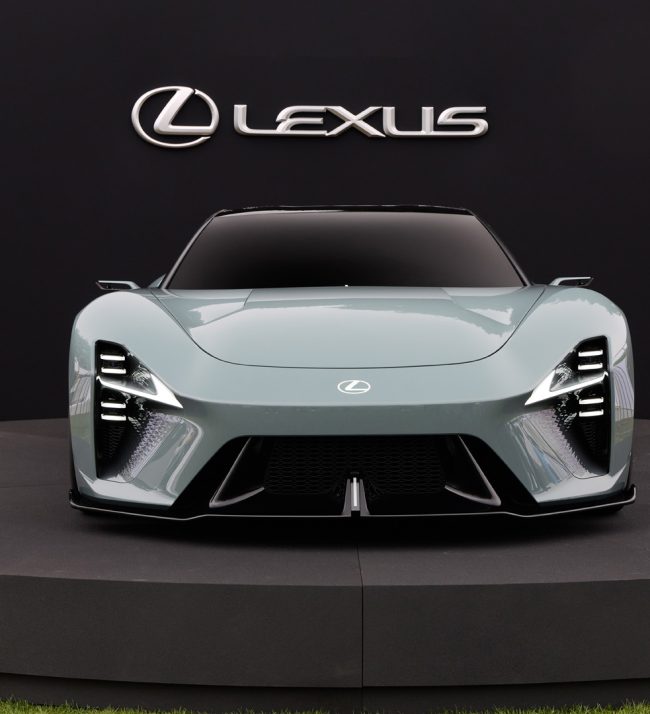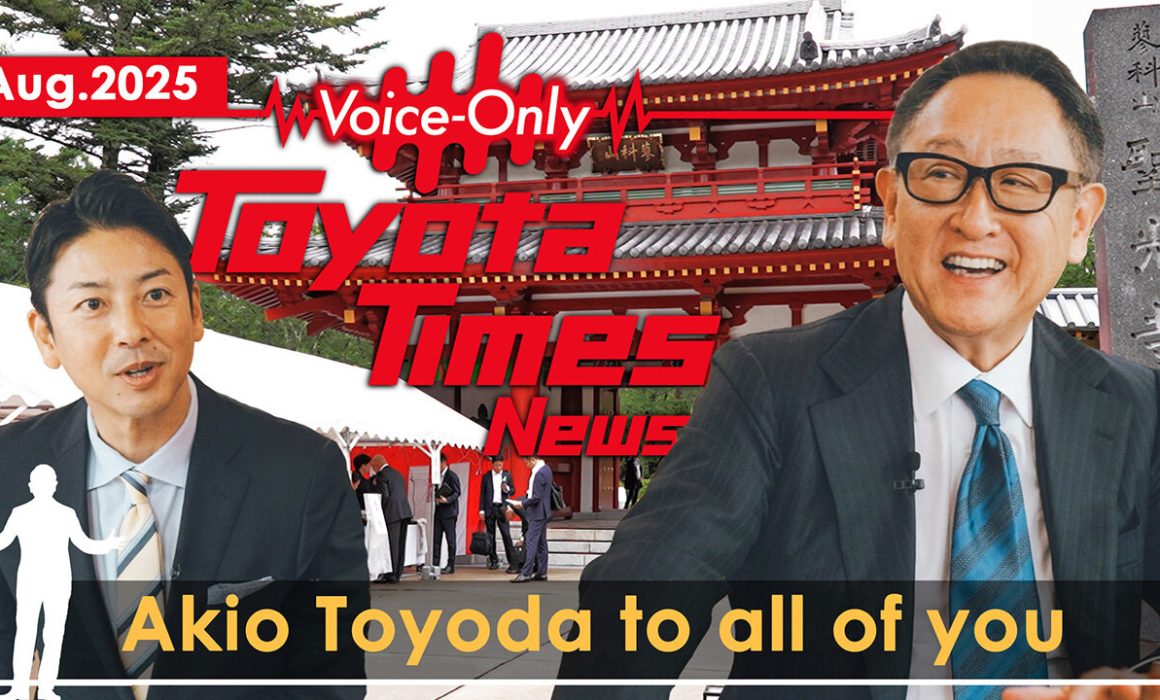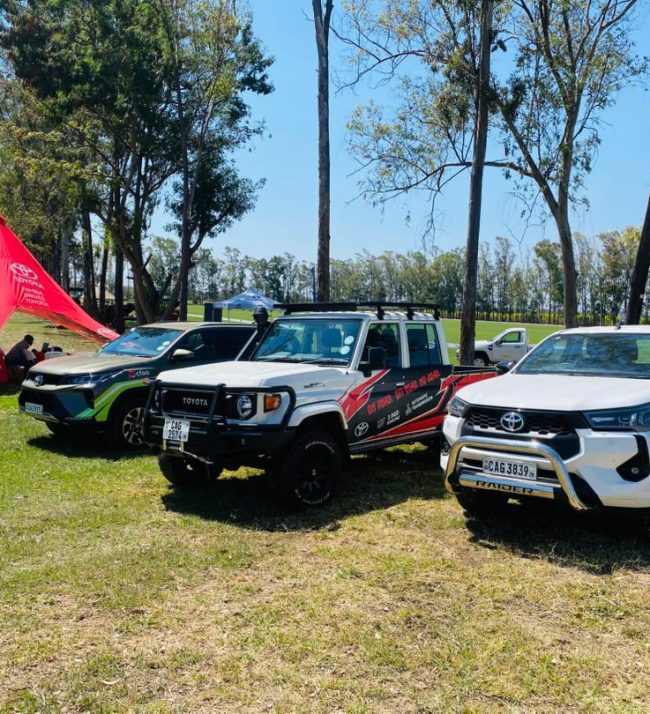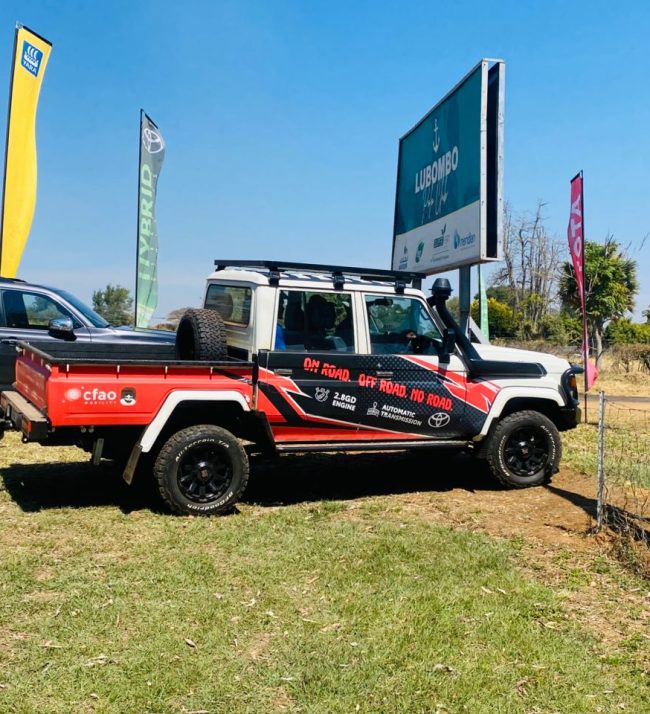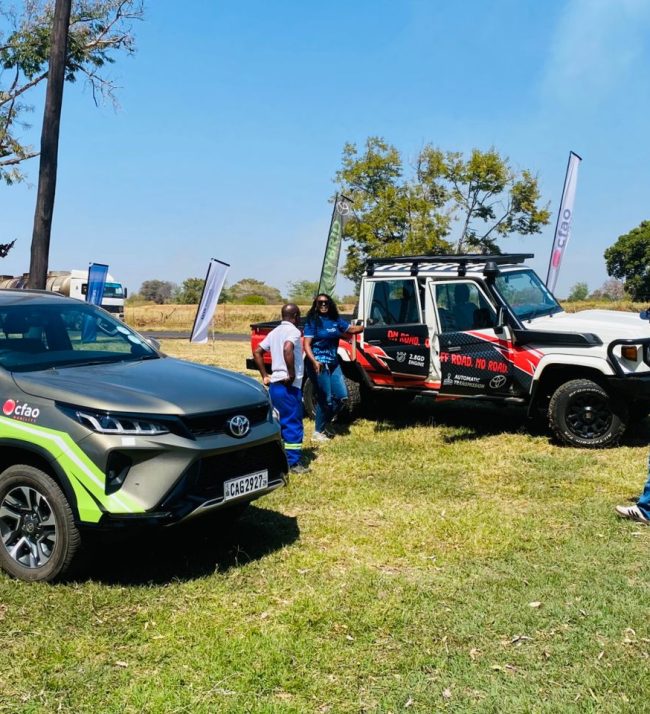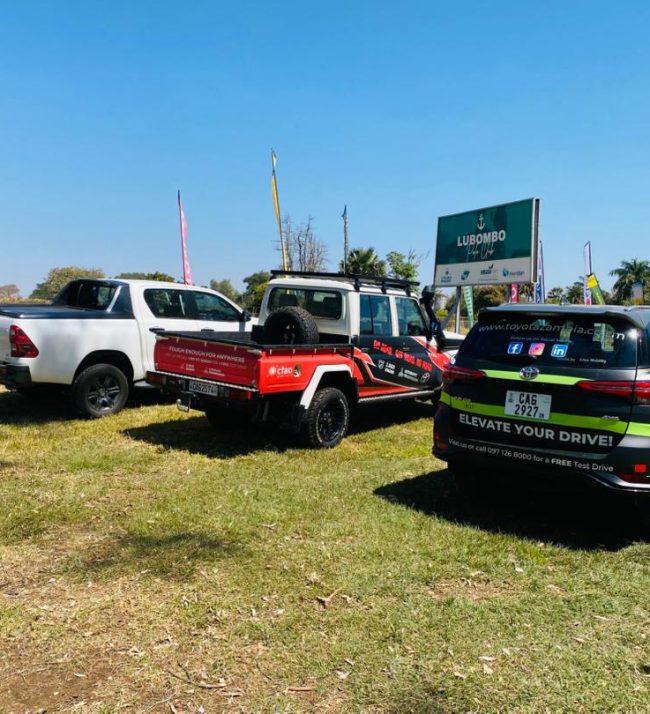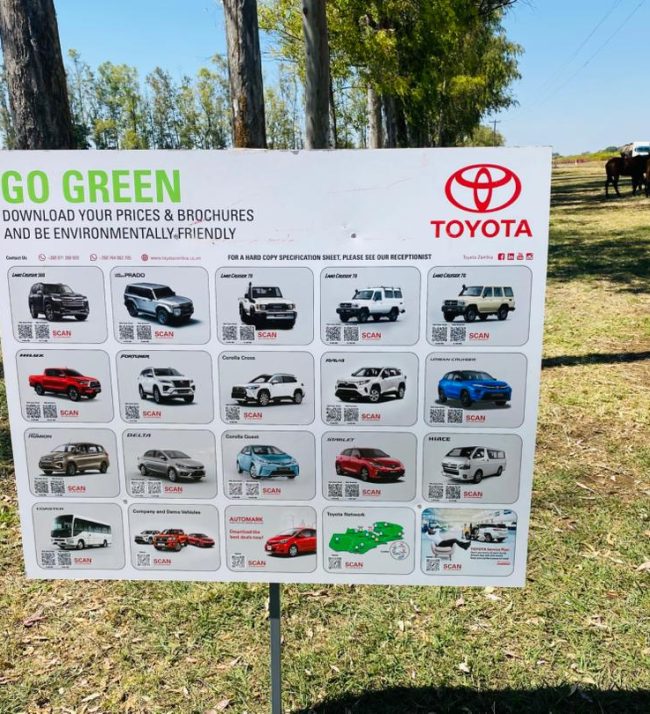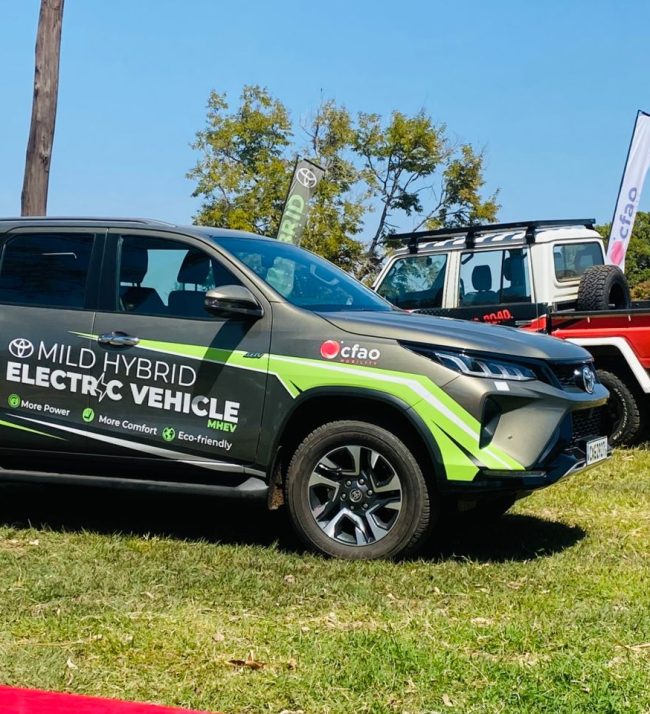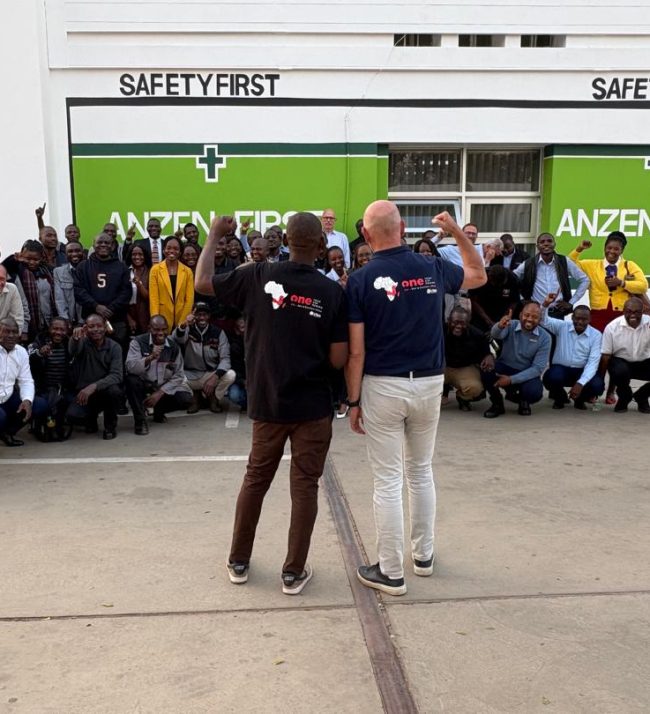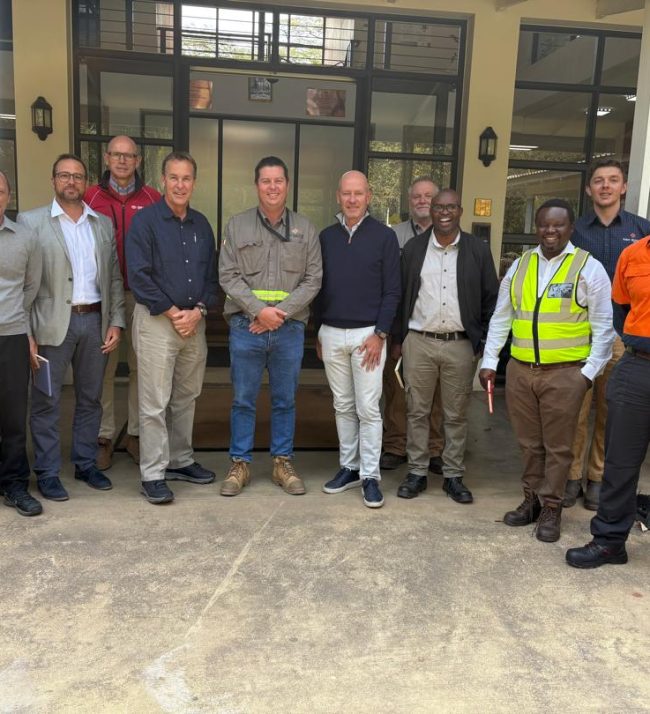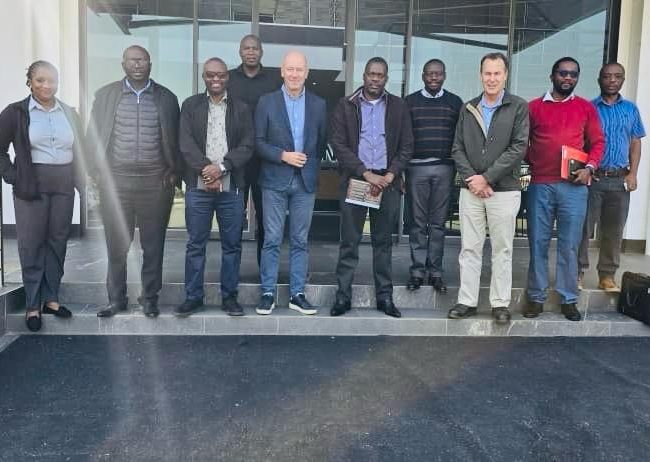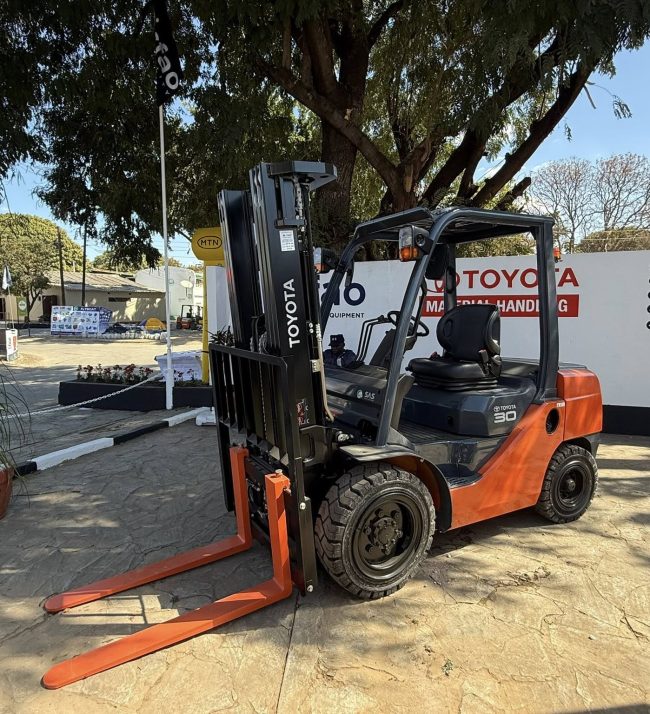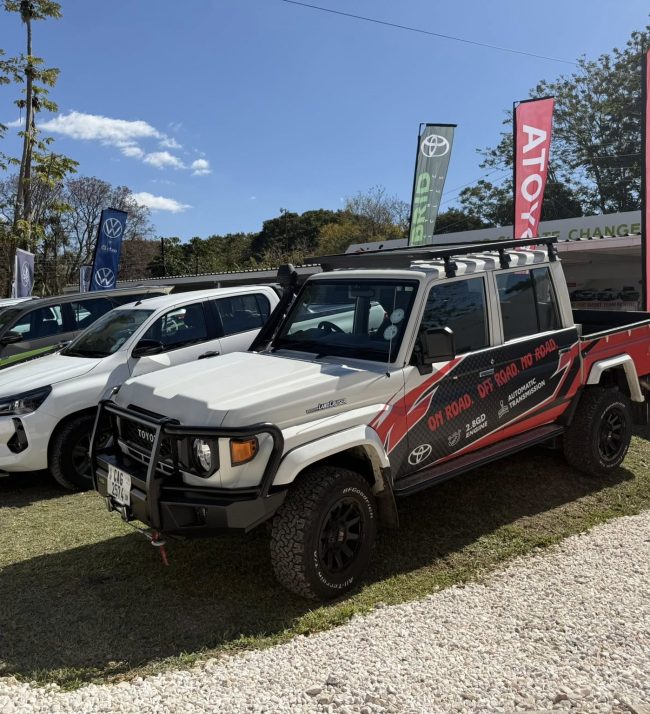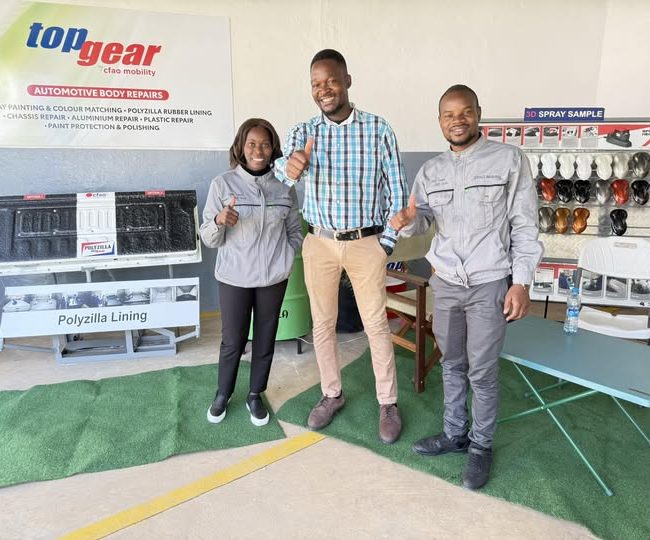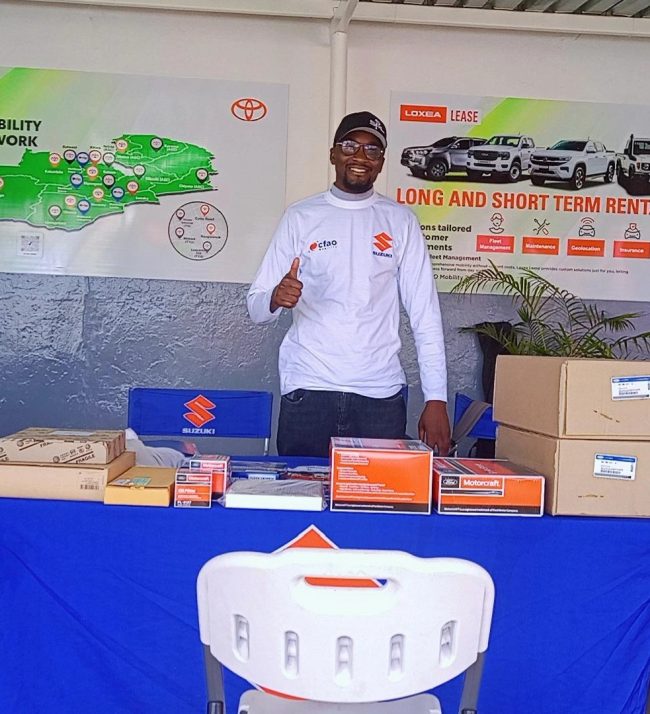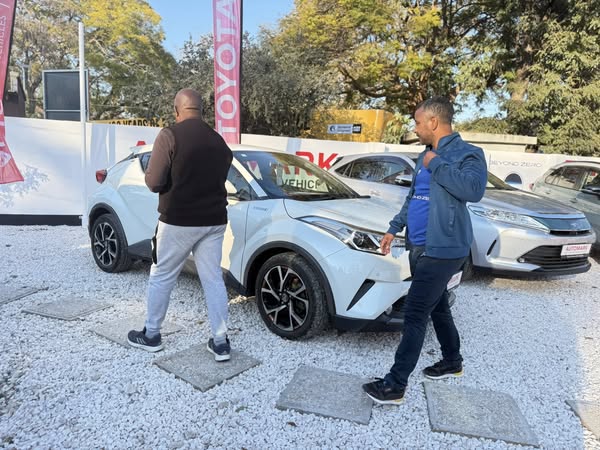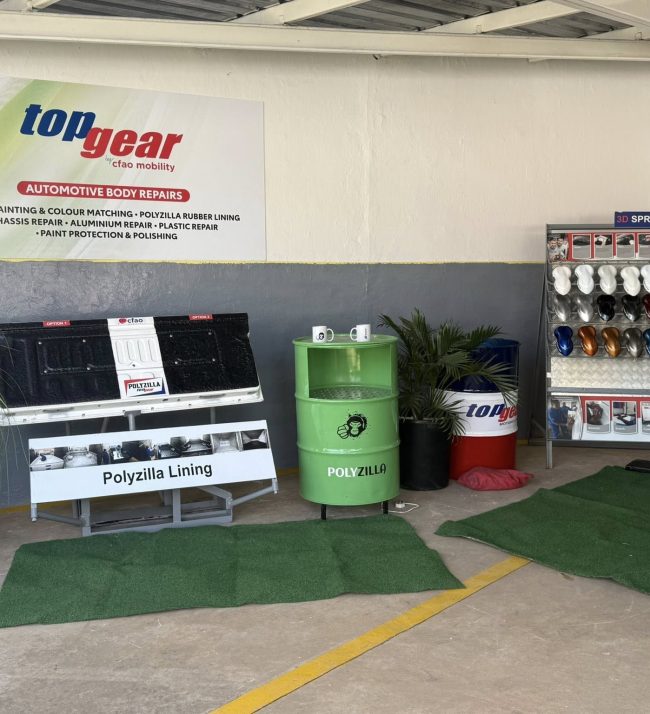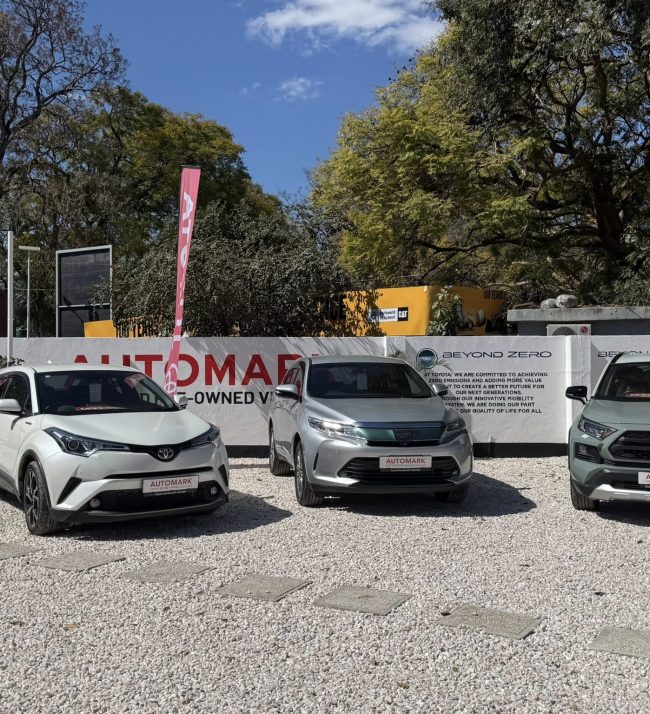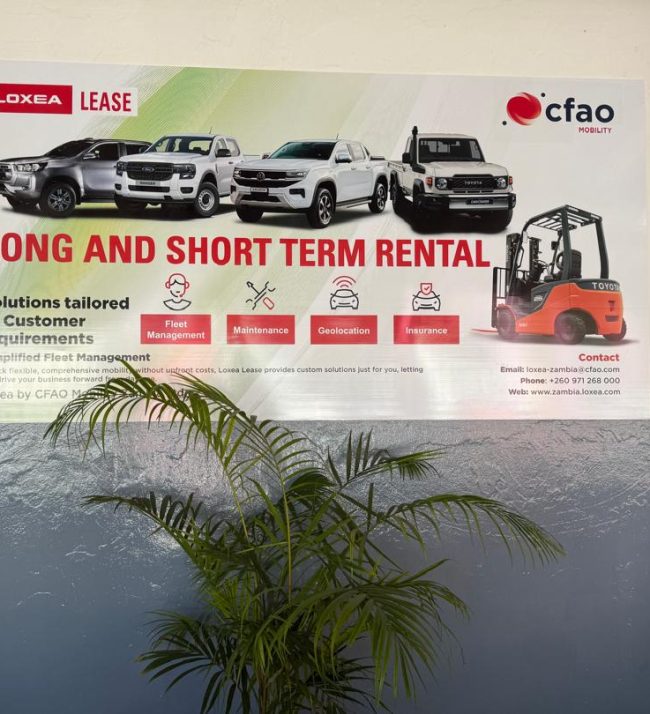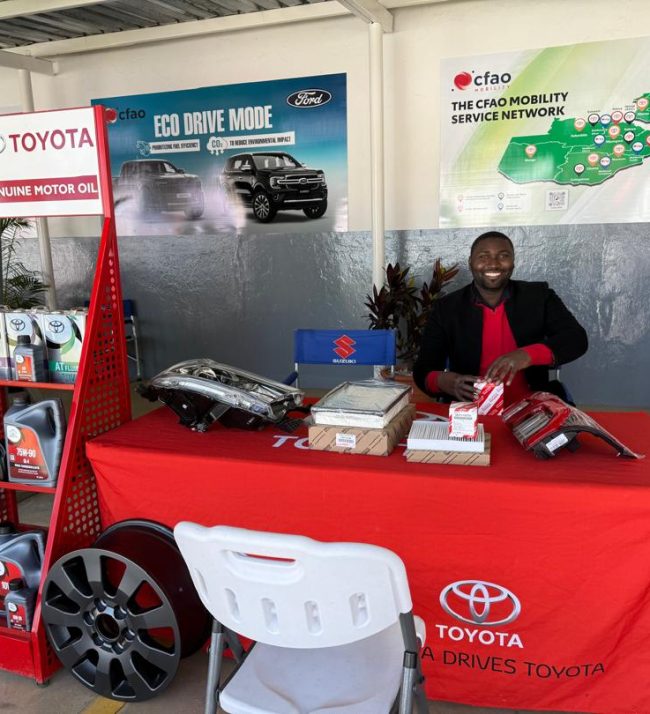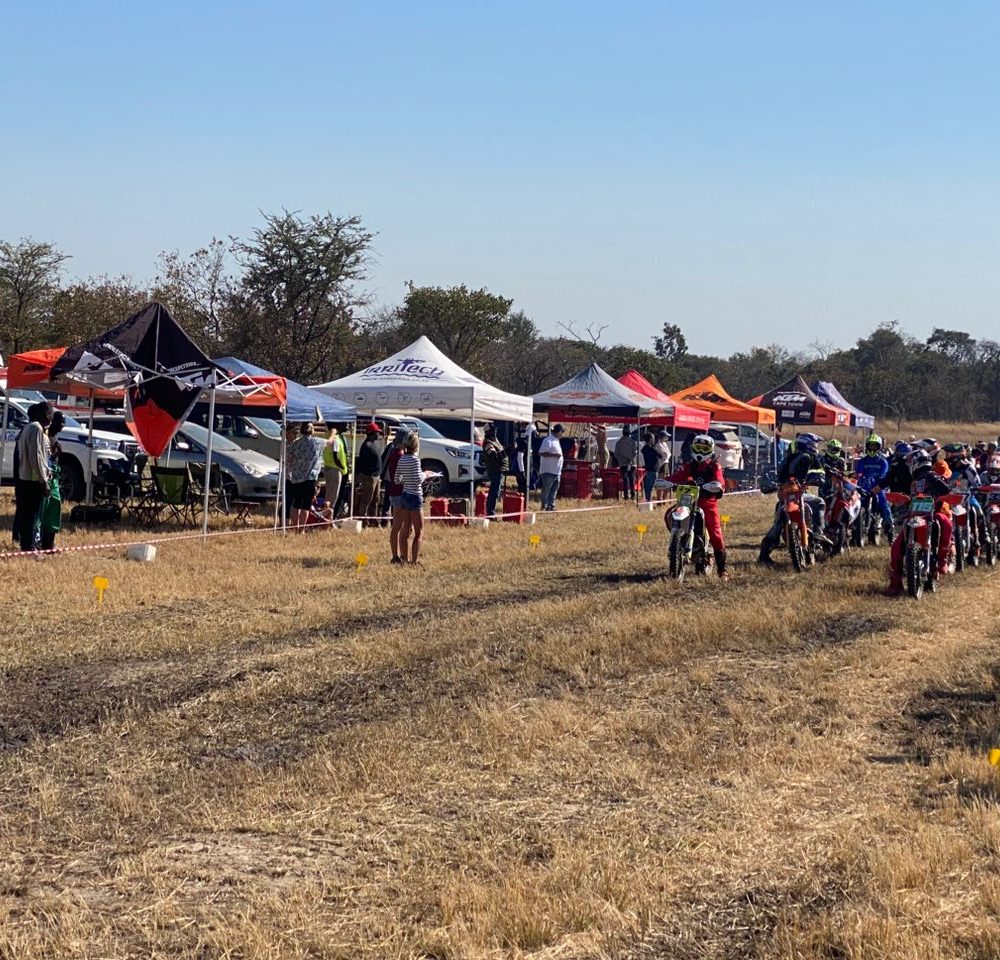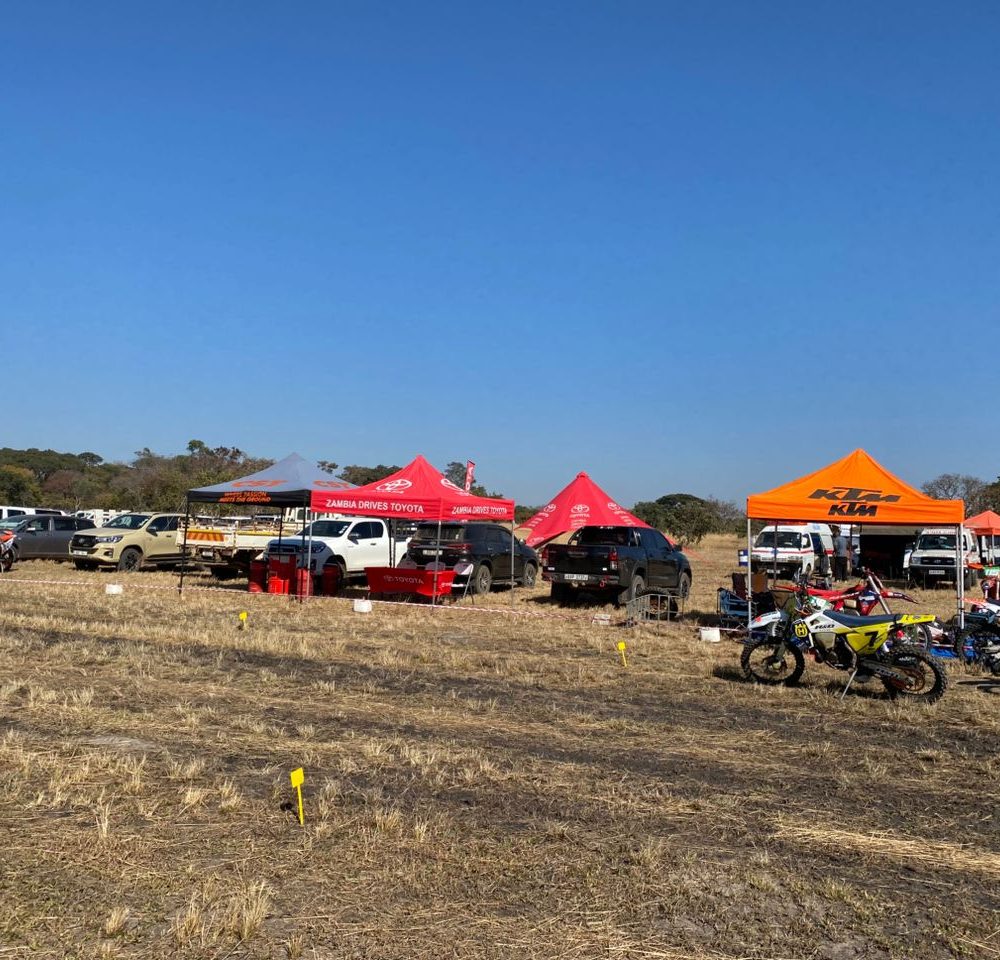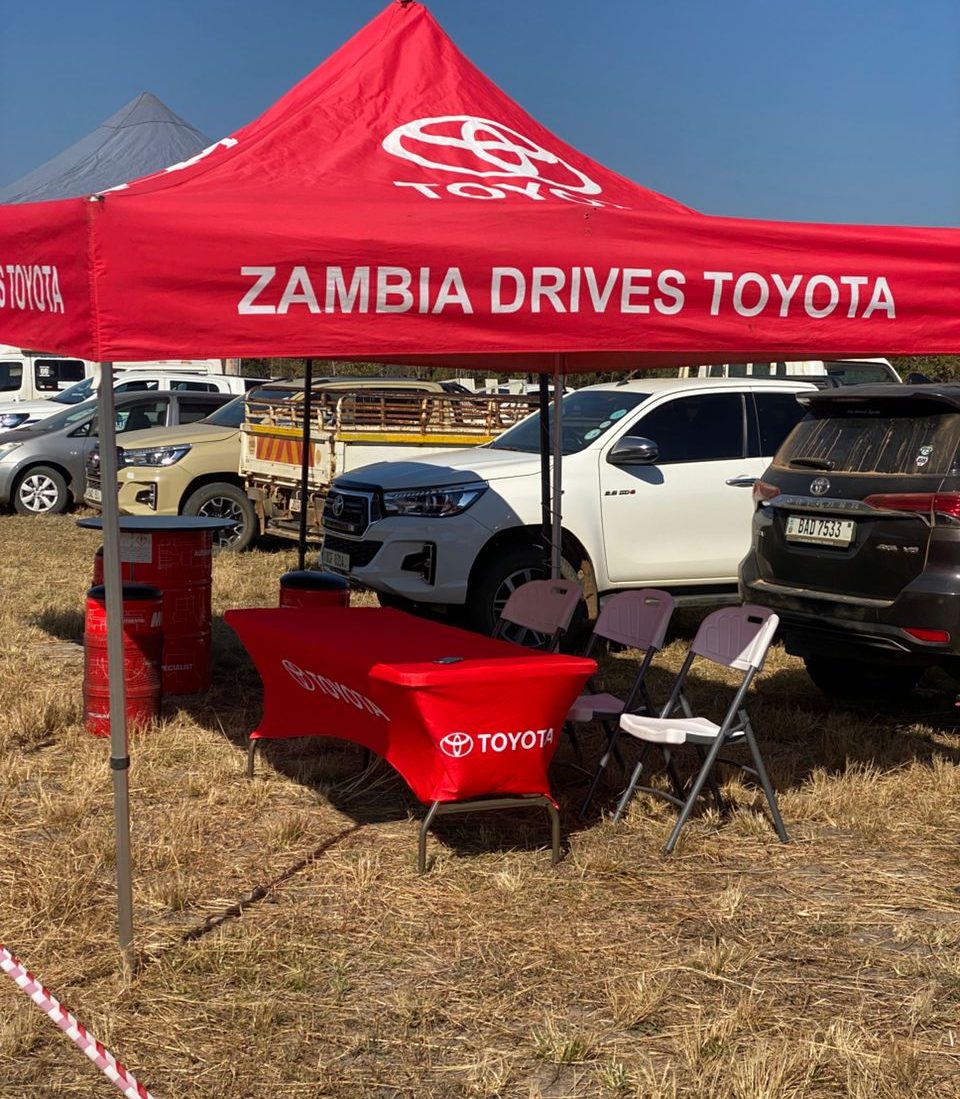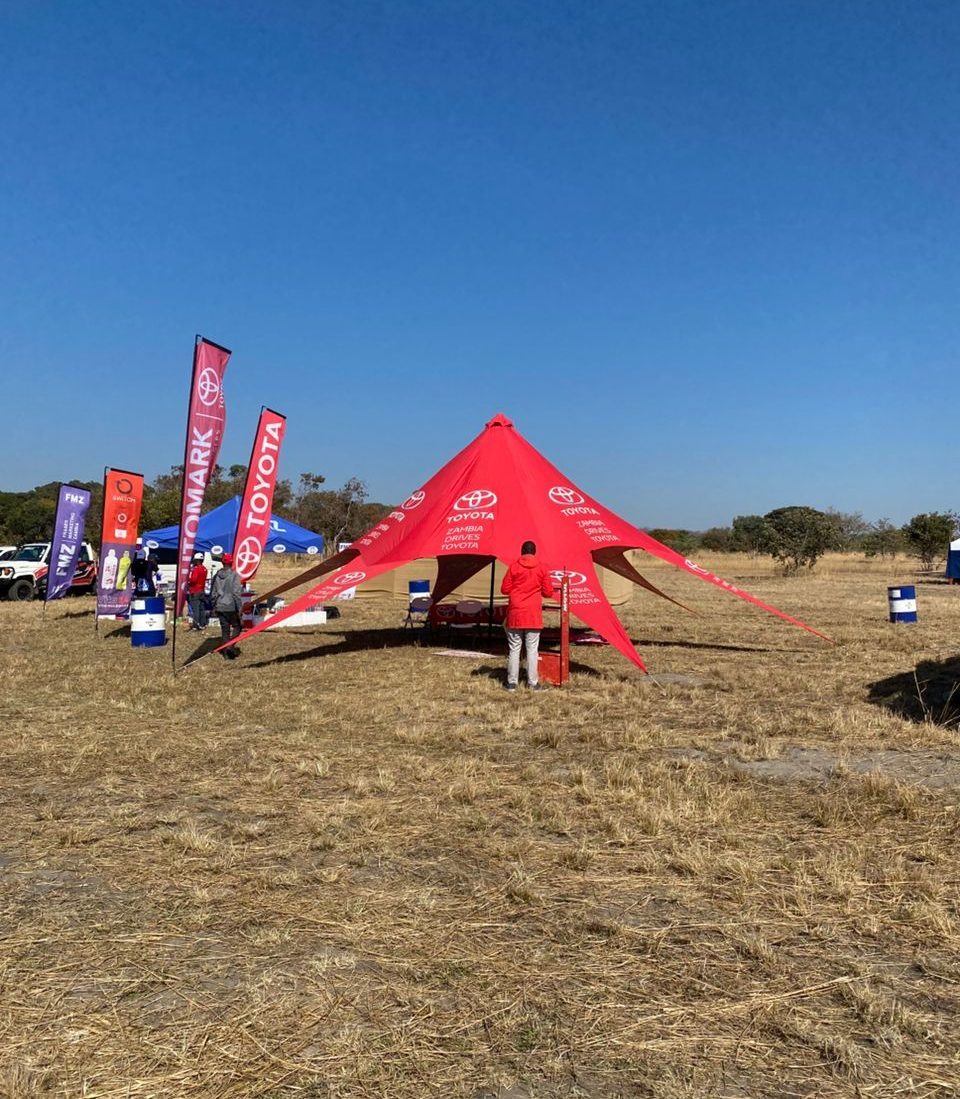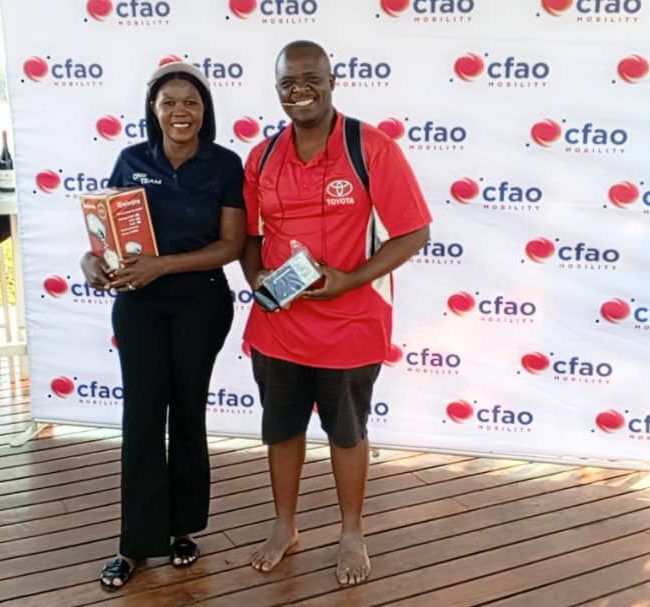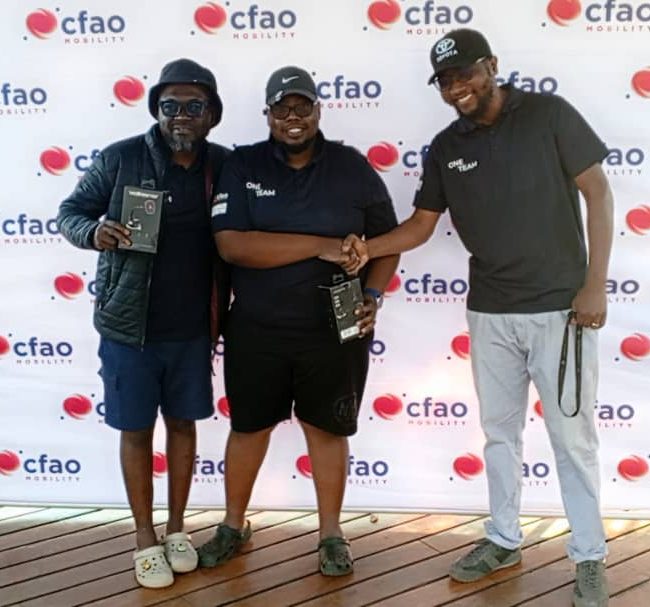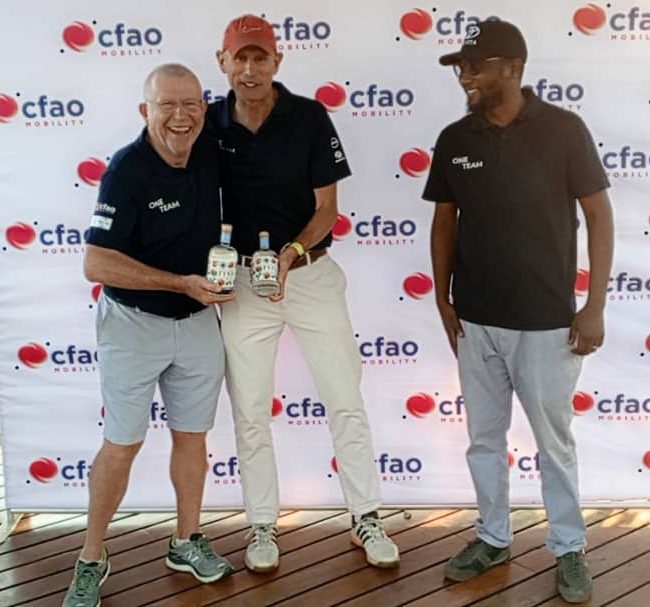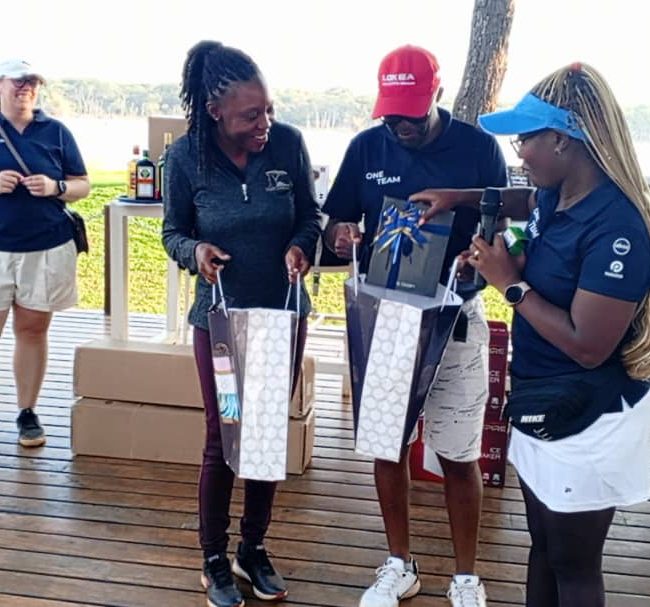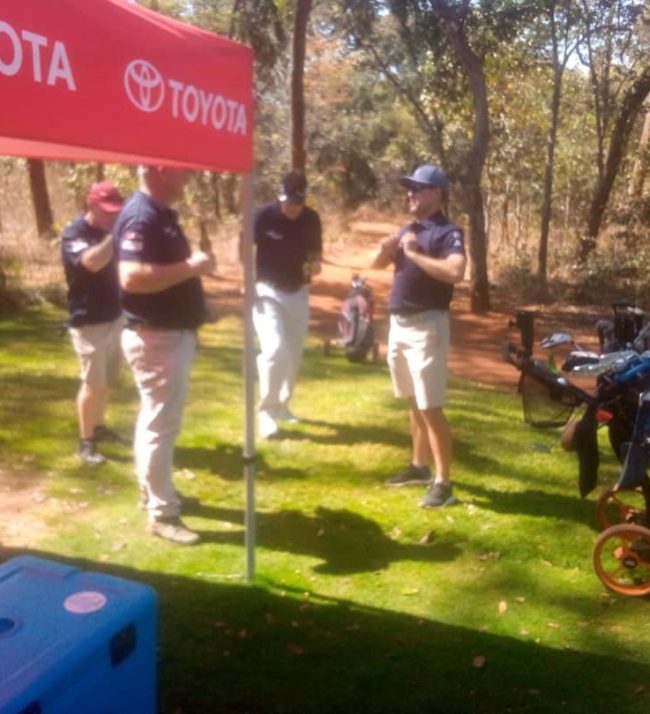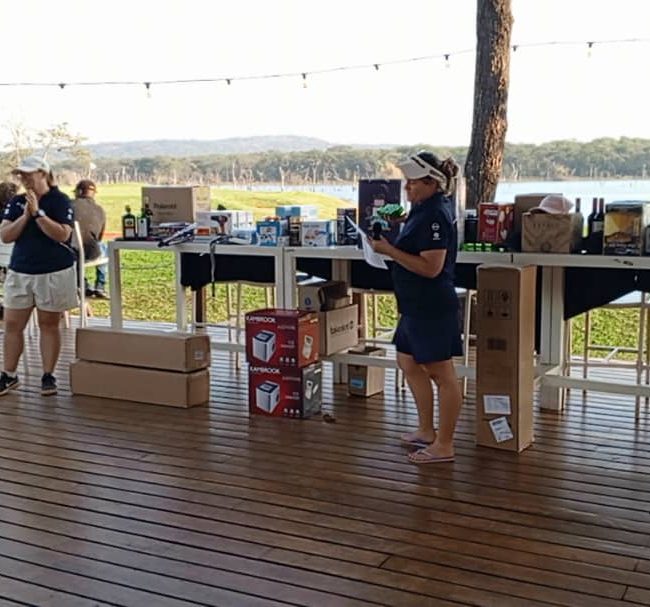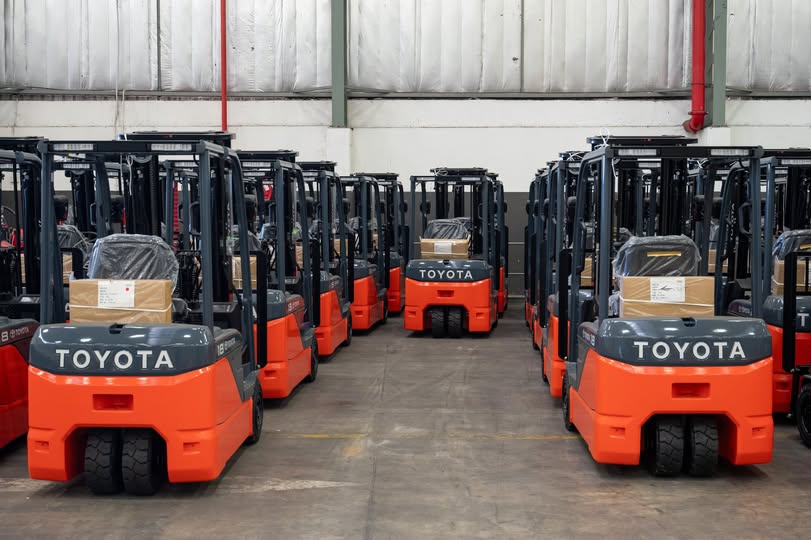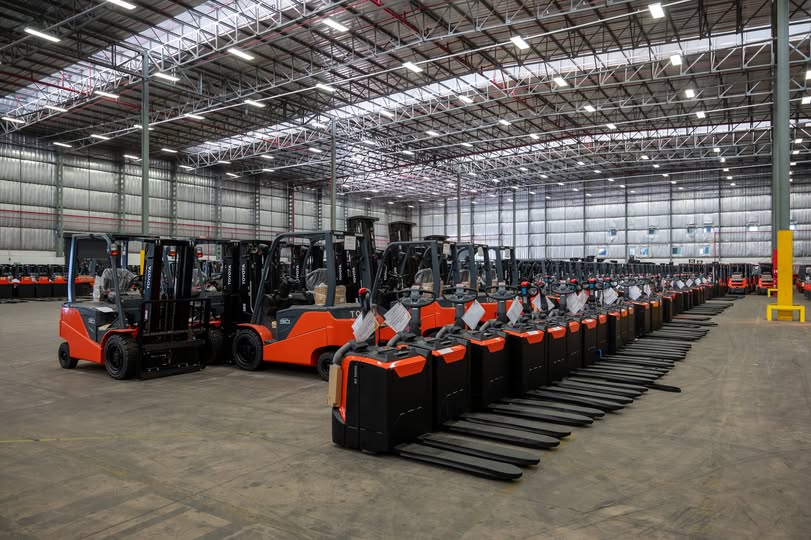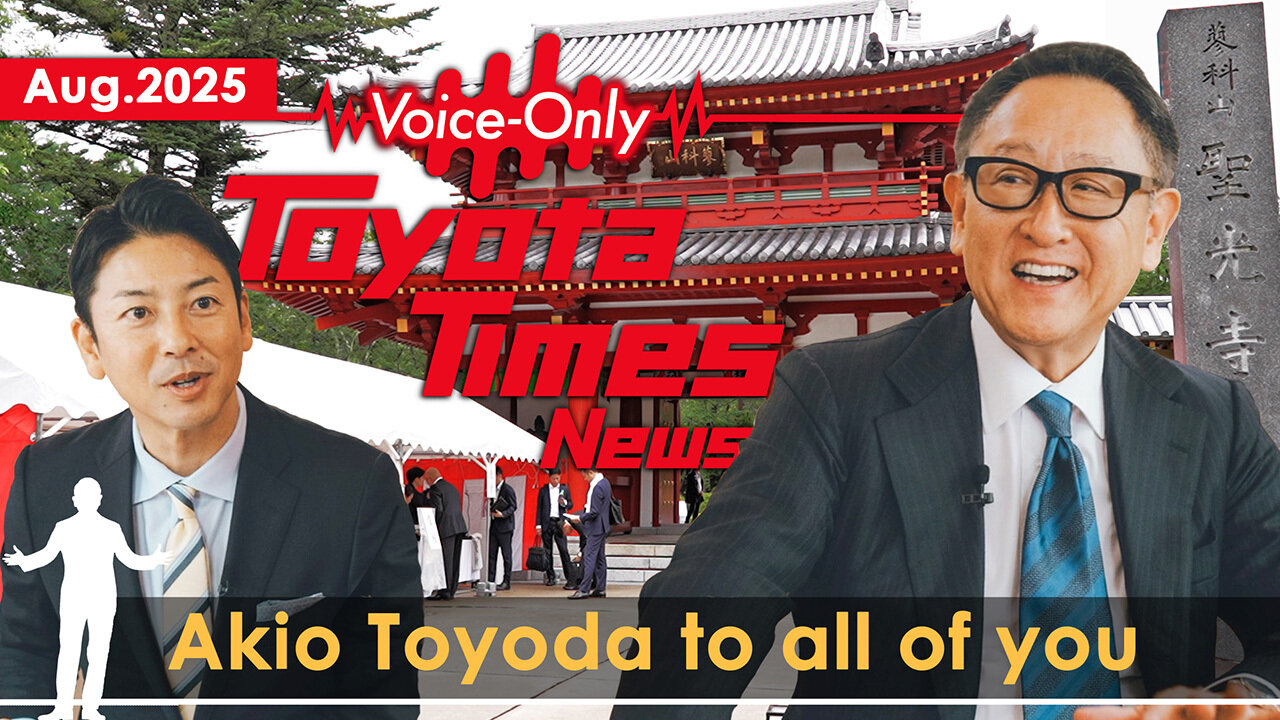
The Mount Tateshina Shoko-ji Temple was erected by Toyota and its dealers to commemorate the victims of traffic accidents and pray for safety. Every summer in July, Toyota’s executives visit to take part in a special ceremony.
Since 2019, the temple has also hosted the Tateshina Meeting, with auto industry leaders gathering to exchange ideas for eliminating road accidents.
The eighth episode of our Voice-Only Toyota Times podcast was recorded at Shoko-ji after the Tateshina Meeting. Little wonder, then, that much of the conversation focused on safety. Note that we will take a closer look at the Tateshina Meeting in a future episode of Toyota Times News.
Shoko-ji is located in Chino, Nagano Prefecture, which is also the stage for the TOYOTA GAZOO Racing Rally Challenge. Chairman Toyoda describes motorsport drivers as the “ultimate example of safe driving.”
Safely reaching the finish line while fighting for every tenth of a second requires outstanding ability in anticipating hazards and handling the vehicle. These are the key elements of safe driving, and Chairman Toyoda explains them in a way that holds lessons for the average driver.
Akio also recounts an incident involving a car that spun out during practice for the 24-hour endurance race held at Fuji Speedway (Oyama, Shizuoka) in May–June. Although the data showed no issues, master driver Morizo and his fellow pro drivers certainly sensed something unusual. By dealing with the problem early, the team was able to complete the race without trouble.
Morizo has personally embodied Toyota’s commitment to making ever-better cars through motorsports. What is his current ideal in terms of car safety?
The discussion also turns to Daihatsu’s certification issues. What was the mindset behind the emergency live broadcast? Ever since, Chairman Toyoda has remained dedicated to visiting the genba, showing how the head of an organization should act when dealing with a crisis.
After spontaneously deciding to record on the approach to the temple, the podcast once again dives straight in. No rehearsals, no scripts. That’s what makes for such candid conversation!
https://youtu.be/FaKgBd39Md4?si=DWi_VZSnsodVlCGd
Akio’s skincare routine
Tomikawa
Hello to our Toyota Times listeners, I’m Yuta Tomikawa. Voice-Only Toyota Times News is back after… well, it’s been half a year.
Toyoda
Since CES (January 21 episode), I think?
Tomikawa
We apologize for keeping you all waiting. Once again, I am here today with Akio Toyoda.
Toyoda
Hello everyone.
Tomikawa
Since it’s summer right now and the UV rays are strong, let me start by asking about your skincare.
Toyoda
At Nürburgring you also commented on how good my skin looked.
Tomikawa
I sure did. I was amazed.
Toyoda
It doesn’t come cheaply.
Tomikawa
But I feel like there’s more to it than that. In fact, all kinds of people, men and women alike, have said to me, “You need to ask Akio how he takes care of his skin.”
Toyoda
Tell them it costs a lot.
Tomikawa
You’re not going to reveal any more? What about your daily routine? Do you use lotion or other products?
Toyoda
No, not really.
Tomikawa
You don’t?
Toyoda
Well, I do the bare minimum, washing my face every so often. Men don’t usually wash their faces much, right? Just splash some water on and that’s it. But from time to time, I make an effort and use a facial cleanser.
Tomikawa
Something nice and foamy?
Toyoda
That’s right. When they do that, guys tend to scrub the skin.
Tomikawa
I see, and that irritates.
Toyoda
Women press gently instead. Same thing with lotion—men smear it on thick.
Tomikawa
We slather it on.
Toyoda
That’s not right. Press it on, let it seep in. You should at least do that as the bare minimum.
Tomikawa
I should, seeing as my face is out there for Toyota Times News, etc.
Toyoda
Matsuko Deluxe commented on it the other day, right?
Tomikawa
He did. He said I wasn’t looking hot enough.
Toyoda
He said you’ve lost your glow. You need to make an effort.
Tomikawa
I am watching what I eat though. And what about sunscreen?
Toyoda
I get told I need to wear sunscreen. But even so, I get spots removed once a year.
Tomikawa
That’s why your skin is spotless.
Toyoda
You want to do that when there is less UV. That’s why December is always my time for a touch-up.
Tomikawa
Make use of the year-end holidays.
Toyoda
More people are following my lead, but many are doing it in April and May. That’s not a good idea. The UV rays are strongest, making it the worst time.
Tomikawa
I see. Pick a time of year when the UV is weak, and you’re on holidays…
Toyoda
I didn’t realize this was a beauty tips podcast.
Tomikawa
Yes, we’re starting off with beauty tips.
Toyoda
Right, I see.
Tomikawa
It’s great that you’re happy to answer these kinds of questions. Thank you.
Praying for safety at Shoko-ji Temple
Tomikawa
All right, today we are both at Shoko-ji Temple in Chino, Nagano Prefecture.
The reason is that every year on July 17 and 18, Shoko-ji hosts a summer festival to commemorate the victims of traffic accidents and pray for the speedy recovery of those who suffer injuries, as well as greater safety on our roads. This tradition has been continuing for more than 50 years.
Toyoda
Fifty-five years, they were saying.
Tomikawa
Since 1970, isn’t it. The temple itself was erected by Shotaro Kamiya, known as the “kami (god) of sales.” Later it was overseen by Shoichiro Toyoda.
When did you begin coming here?
Toyoda
I don’t remember exactly.
Tomikawa
Did you visit together with Shoichiro?
Toyoda
At times we did.
In the past, our dealers in Japan were divided into regional branches, and they would all gather here for the summer festival on the 17th and 18th. But since it was hard to get dealers out for prayer services, they would be combined with golf tournaments and the like. All told, they would spend three or four days together.
I used to oversee one of those sales districts, so I would accompany the dealers on their visits. If you include that, I’ve probably been coming here since my 30s.
Tomikawa
So more than 30 years by now?
Toyoda
I think it’s been at least 30.
Tomikawa
Since your time in sales?
Toyoda
That was part of it, but I may have been brought here before that. Basically, I’ve been visiting Tateshina at this time in July for so long that I can’t remember when it began.
Tomikawa
The head priest at Shoko-ji and others acquainted with Shoichiro have spoken of his dedication in working toward zero traffic accidents and zero casualties.
Toyoda
That’s right.
Tomikawa
You have also been very vocal on this front.
Toyoda
At a previous Tateshina Meeting, former Chairman Uchiyamada once commented that, when he spoke to Honorary Chairman Shoichiro about reducing traffic casualties to half, the response was, “You mean ‘zero,’ right?”
As I’m sure you have sensed, that mindset has permeated the company.
That’s why if Toyota is going to work on something like autonomous driving, our goal for traffic casualties is always zero. What can we do to reach zero? That’s what we discussed today.
Tomikawa
We will be featuring that on Toyota Times News, so listeners can watch that episode for more details.
Motorsport and safe driving
Tomikawa
When I joined Toyota, I also sensed how earnestly everyone was confronting the problem of traffic accidents. Not just Toyota, but also partner companies, insurance firms, and academic institutions. I learned about the three-pronged approach to pursuing zero traffic accidents.
Along the way, I became a rally co-driver—although of course I aspire to get behind the wheel—and being involved in rallying has made me even more aware of road safety.
Toyoda
I agree. Some people talk of motorsports as “dangerous” or “reckless,” but in my opinion those who participate in motorsports are the ultimate example of safe driving.
Being the ultimate safe drivers is what enables them to be fast. Rally Challenge, for instance, is an open-entry event. By taking part in motorsports, people gain a greater awareness of safety behind the wheel.
While driving, people shift their gaze to look at different things. When racing at high speeds, you look where you need to look, not glance around needlessly. That makes for safe driving. I think that taking part in motorsports contributes massively to safer driving.
Tomikawa
The faster you drive, the more focused your gaze. But you and other pros are able to see what’s around you as well, so even though you’re driving at such high speeds, you can talk about what happened at any given point.
Toyoda
I think it’s only for an instant, but we can pick up the key information.
Take the mirrors for example. As you head into a corner, there is nothing to see because the car is already turning. But on the straight before the turn, you might see that a fast car is coming up from behind, so that even as you’re focusing on the gas, brakes, and steering during the corner you can anticipate when that car will approach. I think such elements play a big part in safe driving.
When we talk about checking for safety, people ask what to look out for in dangerous areas, but I think being prepared before that stage is important.
Tomikawa
When I started driver training, I found out what it feels like to have the car slide out of control. I never knew that before, so bit by bit I had to learn what to do if it happens.
Knowing this, you are able to respond when the car does something slightly unexpected in everyday driving. I feel like that helps to take safe driving to the highest level.
Toyoda
Ultimately, your body and the car are in contact through your hands on the steering wheel, your feet on the pedals, and your hips on the seat, which allows you to feel the tires on the road.
In a normal car you have four wheels, and you gradually get a feel for what is going on with each one.
When you brake, the front dips down. This means the load is shifting to the front. In a front-wheel drive car, the front will rise when you step on the gas pedal. Being able to feel these changes allows you to drive more safely.
Tomikawa
It’s a simple matter of braking and then turning when the weight shifts to the front.
Toyoda
If you turn the wheel when the load is shifted forward, that extra weight will make the car turn even with a slight shift of the steering wheel. So if you tap the brakes before cornering, the car will make the turn without needing too much steering wheel movement.
The sensors of a master driver
Tomikawa
With your many years as Toyota’s master driver, you have a good sense of how cars behave, but was that the case from the beginning?
Toyoda
No, it wasn’t.
Hiromu Naruse often reminded me that a car consists of 30,000 parts. He said, “I am a driving doctor. People call me a master driver, but I consider myself a doctor. As a doctor, it’s my job to listen to the cries of those 30,000 parts. Just as when you visit your local doctor, you start with a checkup.”
And so, when Naruse got in a car, the first thing he did was check its condition—how were those 30,000 parts doing? Which ones were out of sorts?
Recently, I’ve been racing with professional drivers at the Nürburgring and in Super Taikyu. The pro drivers have even more incredible senses. They can diagnose problems with pinpoint precision.
In my case, I can tell you the symptoms, but I wouldn’t know the name of the disease. Naruse could name the disease and write out the prescription to make things better. I think that might be why he called himself a driving doctor.
Tomikawa
And now as Morizo, you have taken up the mantle. Does that make you a doctor as well?
Toyoda
Well, I don’t know about doctor. I’m just a guy who loves cars and driving.
That said, I think I’ve gained a fair sense of when things aren’t right.
Tomikawa
And you can convey them precisely.
Toyoda
For example, at the recent 24-hour race at Fuji Speedway, I went into a spin while driving before qualifying. What did our engineers say when that happened? “No, the data doesn’t show any problems.”
On the other hand, one of the pro drivers said, “Hang on, Morizo wouldn’t spin out in that spot—there must be something to it.” He took the wheel in my place and, sure enough, noticed that one wheel wasn’t moving properly.
Tomikawa
One of the dampers was a bit out of sorts, wasn’t it?
Toyoda
Because we figured it out then and fixed it, we managed to complete the 24 hours without incident.
I think it’s fair to say that human sensors are still more finely tuned.
Though I myself am not a doctor, I have many doctors around me. When it comes to sensing what’s wrong, the gap between me and the pro drivers is closing, so if I describe the symptoms, they will understand. In that respect, we are now able to share the same cars.
In the past, the difference in my driving skills and the professionals was too large, so it was just too dangerous to share the same cars. Dangerous for both sides.
Tomikawa
Now you’re the same.
Toyoda
That’s right, and our times are similar enough that we can more or less share the same cars, and trust in the cars more as well.
Tomikawa
I see. In other words, having both master driver Morizo and the pro drivers, with their finely honed senses, perform the checkups and take care of issues together makes for ever-better carmaking. Better cars mean better quality, which is also linked to road safety.
Toyoda
Well said. The safest car is one that you can drive easily and comfortably without tiring. Whether we’re talking about motorsport or safety on ordinary roads, the best cars are stress-free to drive.
Tomikawa
When you’re tired, you lose the ability to concentrate.
Toyoda
As master driver, I would also like to add “fun to drive” into the mix.
Tomikawa
Fun, stress-free, and no accidents—that’s the ideal.
Toyoda
Then you can drive for a long time. Driving a long time without accident, that’s what safety is all about.
How a leader handles a crisis
Tomikawa
That’s why I thought your regular activities as master driver are closely connected to the summer festival here in Chino.
Toyoda
If you recall, soon after becoming president, I attended the public hearings in America. Since it was a sudden decision, just two weeks before the hearings began, to be honest I wasn’t really able to prepare.
The preparation that I did have was my dialogue with our cars, at that point not as master driver but merely a test driver. I feel that my strongest asset at those hearings was being able to speak about and explain the cars.
Tomikawa
After putting yourself out there like that and apologizing in the public hearings, you came forward again during the various certification issues to provide explanations. You put your hand up and said, “I take full responsibility,” which opened the door for reporters to start asking the fundamental questions.
It was the same with Daihatsu. I remember when the company’s certification issues came to light. You contacted me that day and said, “We’re doing a live broadcast today,” and on there you clearly explained Toyota’s position.
Thinking back on Daihatsu’s case, I’m sure there were people at the genba whose spirits were raised by the way you took responsibility in that moment. And even after that, you would drop by the dealerships unannounced, visiting not only Toyota dealers but Daihatsu as well.
When I visited the dealerships later, everyone was very proud, showing me photos and recounting how you had just come up and talked to them. What drove you to do that, to make the effort and visit the dealers?
Toyoda
No one can run a car business single-handedly. It takes the efforts of many people.
When problems arise, people ask, “What are you going to do to prevent this from happening again?” Prevention means rooting out the causes.
However, when you don’t know the causes, many people are involved, and the work process is very lengthy, it’s hard to pinpoint the underlying issues. In that situation, the best thing is for me to turn myself in. As soon as I say, “It was me,” the media settles down, and the genba can get on with their work. And then they can start making real improvements.
Making improvements takes time, and you can’t carry out the task if you are constantly being bombarded with criticism.
For one thing, if workers are unable to do their jobs, above all that means we aren’t able to protect our stakeholders.
On top of that, I myself am not an engineer, nor do I know all there is to know about automobiles. When it comes to a love of cars and driving, I would say I am second to none. But I can’t claim to know everything about cars.
Since the incidents happen on the front lines, I try to visit the genba as much as possible to gather information about what is happening on the ground.
When you’re in my position, that information doesn’t reach you.
Tomikawa
Or if it does, it takes considerable time…
Toyoda
In a big company, that’s inevitable. It’s not a question of openness or transparency—people simply don’t share information. If they know they’ll be told off, that’s only natural.
That’s why at Toyota “top-down” means top management coming down to the bottom. “Bottom” is perhaps not a good way to put it, but it’s about the head of the company visiting the genba to obtain information. In my younger days, I too would get asked whether I had been to the genba.
Even now in my position, when I receive a report about something, I say, “Have you visited the genba? If not, find someone who has.” If that’s not possible, then we go and see for ourselves.
During the Tokyo Olympics, there was an accident involving an e-Palette. I was at the site within two hours.
Tomikawa
You were very fast.
Toyoda
From there, I could see the situation properly.
Facts get suppressed and can only be obtained on the ground. Otherwise, it becomes a game of telephone, in which case, I’m told, only 75% of the message comes across.
Tomikawa
No matter how good you are.
Toyoda
If the message is going through three people, what started out as “right” may end up as “left.” Instead of playing the game, when dealing with a crisis, leaders need to act.
I think this is how I was taught to perform the role by various people over many years.
Daihatsu love
Tomikawa
Speaking of performing, at the recent Fuji 24-hour race, you staged an event featuring the music group MAX, as a live commercial for Daihatsu. The crowd really got into it. Looking on, I felt that it reflected your love for Daihatsu.
Toyoda
Our Roomy model is made by Daihatsu, at their plant in Kyoto. That car was just being released, so if we helped out with sales promotion, that would boost the plant’s operations.
Employee motivation has dipped in the wake of the certification issues, as you can imagine. At times like that, what you most appreciate is being busy with work. And in order to keep people busy, we need more cars for them to make.
Unfortunately, I can’t buy hundreds of cars by myself, so the ways I can contribute are limited.
Based on my own formative experiences, wanting to scribble on a car since I was little, I brought in a Roomy and told everyone they could draw on it, which they did.
Tomikawa
They certainly did. There isn’t an empty spot left.
Toyoda
I don’t know if you noticed at the time, but even though we are ROOKIE Racing, we didn’t write “ROOKIE.”
Tomikawa
It changed, didn’t it.
Toyoda
It became “Roomy Racing.” I was hoping that little hidden gems like that might get people talking.
At the same time, MAX are also celebrating their 30th anniversary, and they really revved up the crowd. Playing on their group name, they created the great catchphrase “luggage space to the MAX.” I think all that worked well in creating buzz.
Tomikawa
It entertained everyone there at the racetrack and continues to give a boost to the people at Daihatsu who see it.
Toyoda
I hope that is the case.
Tomikawa
To me, it looked like a wonderful positive cycle.
After that, the new model was announced, and Daihatsu is now striving to make a fresh start. I think the excitement at the racetrack has contributed greatly to that revival.
Toyoda
The Japan Mobility Show is on this year. I hope that by the time the show comes around, we will be in a place where everyone is able to be optimistic. Anything could happen. We don’t know what the future holds, but right now we are working through it together.
What to expect at this year’s Japan Mobility Show
Tomikawa
We are already coming up on the half-hour mark, but you mentioned the Mobility Show, which is looking very exciting again this year. No doubt there will be lots to see since the last one two years ago, although I don’t know how much you are able to say.
Toyoda
If you bring it up like that, I will end up telling you everything. It’s still too early for me to let the cat out of the bag.
Tomikawa
It is early, isn’t it?
I wouldn’t be able to hold back either.
Toyoda
There is a lot to share, but I think it’s still a bit too early at this point.
Tomikawa
Since we can’t talk about it now, how about doing another podcast closer to the Mobility Show?
Toyoda
Just before the event. But if it’s right beforehand, I definitely will let everything spill.
Tomikawa
Well, we’ll have to check with PR and figure out what’s best.
Toyoda
If you check with PR, (lowers voice) they’ll say no to everything.
Tomikawa
(In a lowered voice) Is that true?
Toyoda
(Whispering) They say no to everything.
Tomikawa
Okay. I saw the head of PR earlier… are they still here? Ah, there we go.
Toyoda
Those say no to everything.
Tomikawa
I see. In that case, you and I can decide together as usual.
Toyoda
We can just let them take responsibility for the result. In the end, I’m the one responsible anyway.
Tomikawa
We won’t cut any of this out, will we.
I’m really sorry it came to this. Thank you for always treating us so well.
All right, so next time let’s do another episode around the Mobility Show.
Toyoda
Great. If we wait another six months, it will be the end of the year.
Tomikawa
That’s too long.
Toyoda
Don’t go interrupting my skin touch-up time.
Tomikawa
Of course not. But a podcast is alright, isn’t it?
Toyoda
Oh right, right. What about the thumbnail image though?
Tomikawa
I can’t get anything past you.
We actually decided to record this just yesterday, while walking together on the path leading to the Shoko-ji Temple.
Toyoda
Didn’t think we’d be doing this today.
Tomikawa
That’s how these recordings always happen.
Toyoda
But that’s the beauty of going in unplanned and unscripted.
Tomikawa
Exactly.
Toyoda
If we have to do meetings, it becomes a chore.
But when it’s impromptu like this, we can use the lack of preparation time as an excuse. It doesn’t matter if we don’t know what we’re talking about.
Tomikawa
We really don’t have notes or anything here. That’s how we do it.
Toyoda
That’s how we do it.
Tomikawa
I hope everyone will look forward to next time. Thank you very much for today.
Toyoda
Thank you.
Source: https://toyotatimes.jp/

Mazabuka’s elite social and sporting calendar reached new heights as CFAO Mobility proudly sponsored the spectacular 2025 Lubombo Polo Season which ran from 15th to 17th August 2025. Set against the breathtaking backdrop of the Lubombo Polo Club, the event seamlessly blended high-octane polo action with cutting-edge automotive excellence.
As a key sponsor, CFAO Mobility turned heads with an exclusive showcase of Toyota’s premium lineup, including:
- The unstoppable Land Cruiser 300 (LC300), the undisputed king of off-road luxury
- The revolutionary Fortuner MHEV, blending power with eco-conscious innovation
- The popular Hilux and versatile yet rugged Land Cruiser 2.8 GD A/T pickup – engineered for Africa’s toughest terrains
The test drive experiences became the talk of the tournament, with guests lining up to experience the LC300’s refined power and the Fortuner MHEV’s hybrid performance firsthand.
Beyond the vehicles, CFAO Mobility’s presence underscored its role as a catalyst for luxury, adventure and community engagement, proving once again why they’re driving Zambia forward.
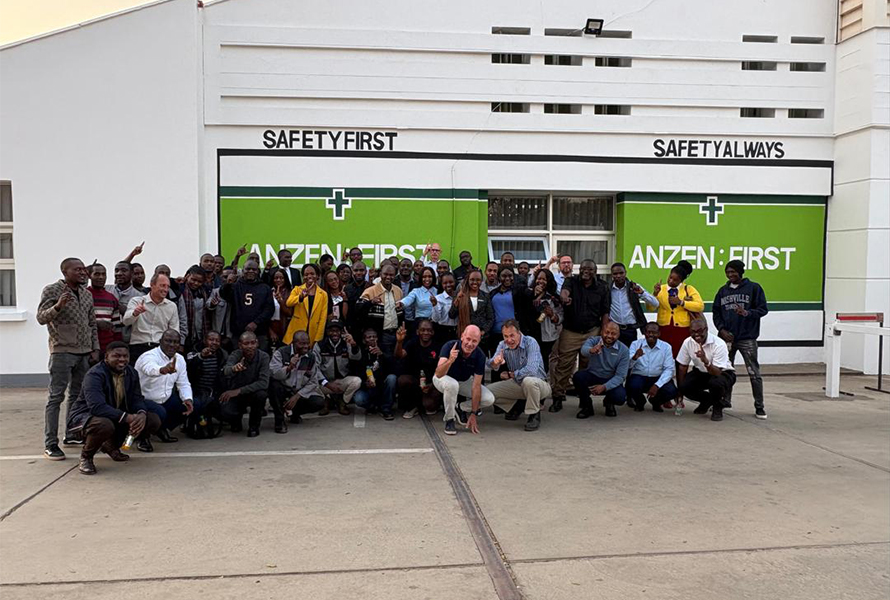
In a powerful demonstration of CFAO Mobility’s dedication to Zambia’s thriving automotive sector, Mr. Fabrice Decreisquer, CFAO Mobility CEO for East and Southern Africa Region embarked on a pivotal four-day tour of Toyota Zambia’s Solwezi and Kitwe branches from 11th to 14th of August 2024.
This landmark visit, Mr. Decreisquer’s first to these crucial mining hubs, was more than just an operational review; it was a testament to CFAO’s commitment to strengthening partnerships, driving excellence, and fueling sustainable growth in Zambia’s mining heartland.
A Deep Dive into Strategic Operations
Solwezi and Kitwe are critical hubs supporting Zambia’s thriving mining sector. Under the leadership of Branch Managers Brian Muyunda (Solwezi) and Charles Michael Daka (Kitwe), these locations provide essential mobility and maintenance solutions to key industry players such as Lumwana Mine, Mopani and First Quantum Minerals.
The recent visit aimed to strengthen our longstanding partnership, reaffirm our commitment to seamless service delivery, and gain deeper insights into how we can better support their operational needs. By fostering collaboration and understanding their challenges, we ensure our solutions remain aligned with their evolving demands, solidifying a relationship built on trust and mutual growth
Mr. Decreisquer’s hands-on approach included:
✔ Comprehensive business reviews – Assessing sales performance, after-sales service, and customer engagement strategies.
✔ Workshop and showroom inspections – Reinforcing brand reputation for quality, reliability, and innovation.
✔ High-level client roundtables – Engaging with mining giants to align CFAO Mobility’s services with their evolving demands.
A Powerhouse Delegation for Strategic Growth
The CEO’s visit was amplified by an elite team of CFAO executives, including:
- Dino Bianchi– CFAO Mobility Zambia Country CEO
- Marin Laviolette – CFAO Mobility Zambia Multibrand Chief Operating Officer
- George Nonde – Loxea Chief Operating Officer
- Peter Blomefield– CFAO Mobility Zambia – Toyota Chief Operating Officer
- Franco Breytenbach– CFAO Mobility Zambia General Manager for Group After Sales
- Mr Shane Duke – CFAO Mobility Zambia Multibrand After Sales General Manager
Their combined expertise provided actionable strategies to enhance branch efficiency, expand market reach, and solidify CFAO’s dominance in Zambia’s resource-driven economy.
Celebrating Local Leadership & Team Excellence
Beyond boardroom discussions, the visit shone a spotlight on the unsung team members, the dedicated teams powering CFAO’s success in Solwezi and Kitwe. Mr. Decreisquer personally commended Brian Muyunda and Charles Michael Daka for their exceptional leadership and deep-rooted client relationships.
Interactive “WhatsUp” sessions with employees further reinforced CFAO’s culture of transparency, collaboration, and shared success, proving that great companies are built on great teams.
A Bold Vision for Zambia’s Automotive Future
As the tour concluded, Mr. Decreisquer reflected on the visit’s significance:
“The passion and expertise of our Solwezi and Kitwe teams, combined with their deep understanding of the mining sector, perfectly embody CFAO Mobility Zambia’s mission, delivering tailored, reliable, and innovative automotive solutions. This visit has strengthened our resolve to invest in Zambia’s growth, empower local talent, and drive sustainable progress.”
With a renewed focus on customer-centric innovation, operational excellence, and community impact, CFAO Automotive is poised to accelerate Zambia’s automotive future—one strategic branch at a time.
Stay Connected with CFAO’s Journey in Zambia!
Follow us for more updates on our commitment to mobility, innovation, and African growth.

The beginning of August 2025 was electrifying as the 97th Agricultural & Commercial Show of Zambia took center stage, setting the tone for an exciting month ahead. Held at the vibrant Showgrounds in Lusaka, this year’s event, themed “Adapting to Climate,” brought together over 300 organizations and 5,000+ visitors, making it the must-attend trade exhibition of the year.
Among the standout participants was CFAO Mobility Zambia, whose dynamic presence not only captivated crowds but also earned us a prestigious Certificate of Participation, a testament to our impactful contribution.
The Heart of Innovation & Excitement
From July 30th to August 4th, our booth became the ultimate destination for automotive enthusiasts, agribusiness leaders, and forward-thinking professionals. Visitors were drawn to our cutting-edge vehicle lineup and innovative Loxea leasing solutions, which showcased how businesses can revolutionize mobility with flexible, smart financing options.
Unbeatable Offers, Unrivaled Performance
We brought Zambia’s most in-demand vehicles, featuring exclusive show promotions and hands-on test drives that left attendees in awe. Our standout brands included:
- Toyota Land Cruiser Pick Up 2.8 GD A/T – Built for Zambia’s toughest terrains.
- Toyota Fortuner MHEV & Hilux MHEV– Power and efficiency, redefined.
- Toyota RAV4, C-HR, and Harrier– Sleek, intelligent, and perfect for modern living.
- Industrial Solutions– Including high-performance Toyota Forklifts for heavy-duty operations.
At the Agric Show, visitors eagerly booked free test drives to experience Toyota’s unmatched performance, conducted after the event. Top Gear Zambia, Toyota Zambia’s approved Body and Paint Repair, also showcased expert collision repair, refinishing, and quality craftsmanship. A thrilling and engaging experience for al
A Proud Moment of Recognition
Beyond the exhilarating demos and sales, we were honored to receive a Certificate of Participation, celebrating our role in Zambia’s most prestigious trade exhibition.
The Lusaka Agricultural and Commercial Show is more than just an event, it’s a driving force for national progress, networking, and innovation, and we were proud to contribute to its success.
CFAO Mobility Zambia is committed to bringing even bigger innovations, better offers, and more excitement to next year’s show.
We extend warm gratitude for all those who took time and passed through our stands.

As a proud sponsor of the 2025 Ray Wilson Memorial Enduro in Chisamba, CFAO Mobility electrified the event with an impressive showcase of Toyota’s off-road capabilities. Held on July 19th, the endurance race saw competitors tackle a challenging farm-track course across two intense 2-hour heats, featuring five rider classes from juniors (5+) to masters (50+), including dedicated women’s categories.
The highlight for many attendees was CFAO Mobility’s interactive vehicle display, where enthusiasts experienced firsthand the power of the Hilux Mild Electric Vehicle, Land Cruiser Pickup GD Engine, and Land Cruiser Prado through thrilling test drives. Feedback from participants and spectators was overwhelmingly positive, with many praising the vehicles’ performance on rugged terrain.
With 30-50 competitors, 200+ support crew, and a buzzing crowd of up to 1,000 motorsport fans, the event was a resounding success. CFAO Mobility’s involvement not only elevated the racing experience but also reinforced its commitment to Zambia’s growing off-road community. The Enduro’s thrilling races, combined with Toyota’s cutting-edge vehicles, made it an unforgettable celebration of endurance, skill, and innovation.
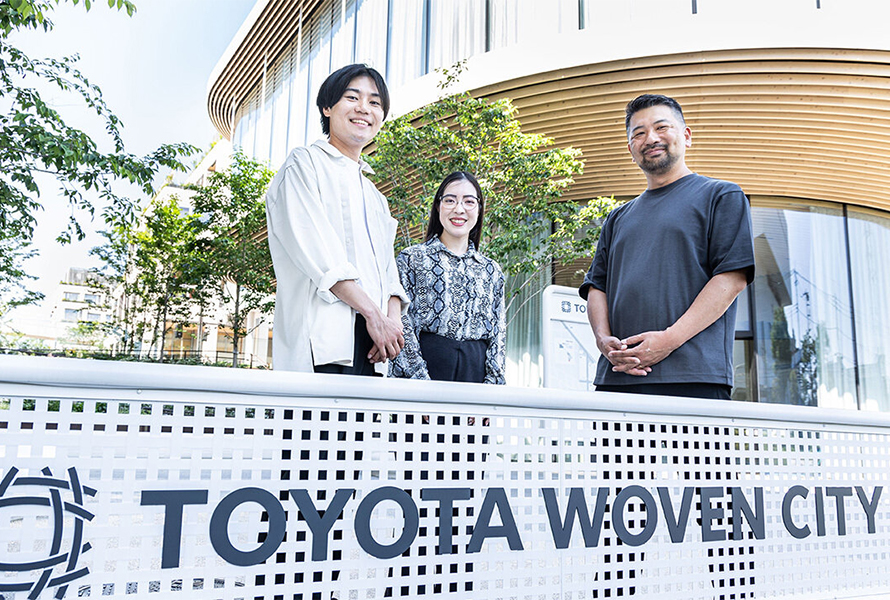
Passing through curtains emblazoned with the words “Weaving the Future,” you find a lawn with cushions, and tables with snacks.
Screens show images of Woven City. The people seated on the grass look relaxed, jotting down notes on the provided materials.
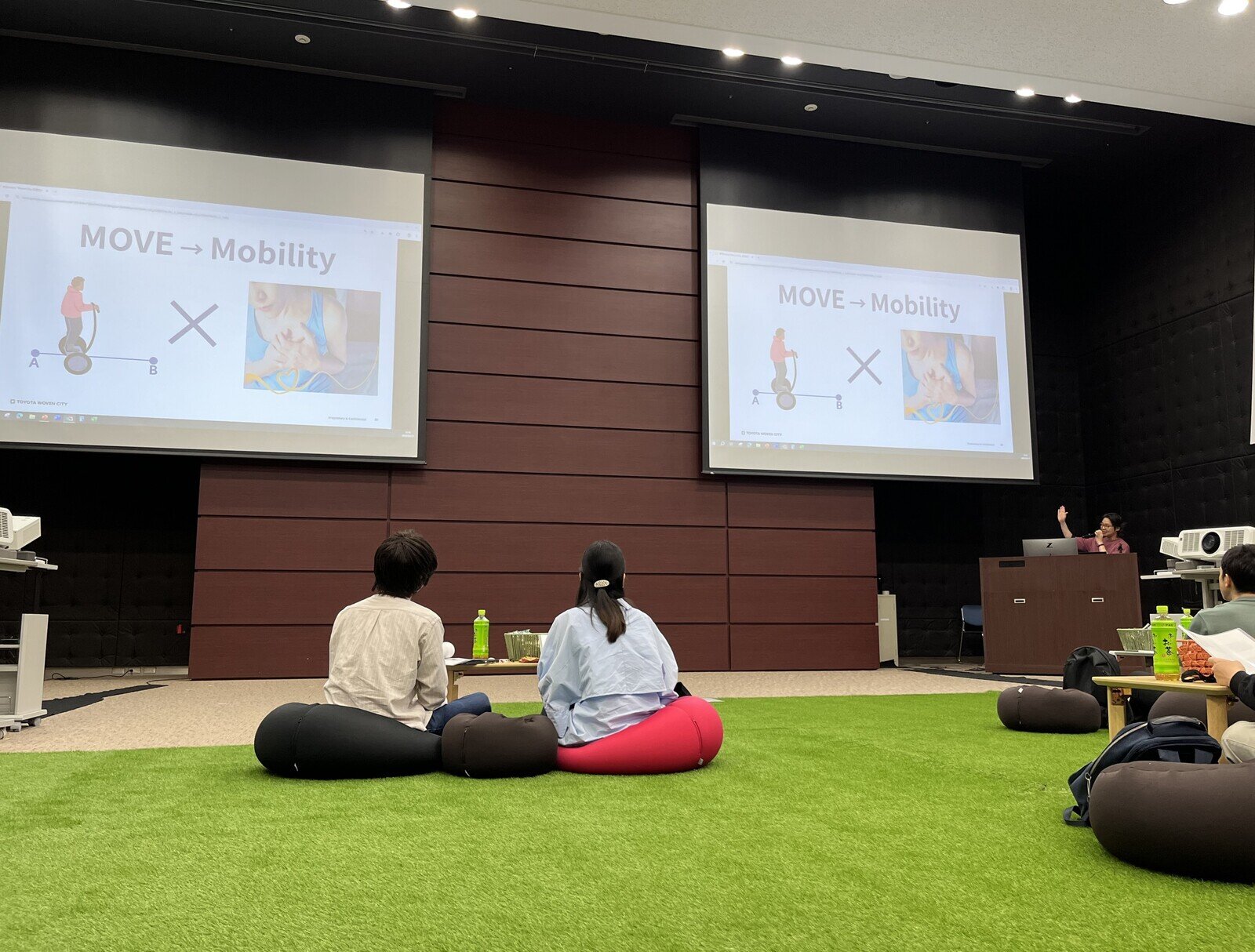
This rather curious scene, somewhere between a conference and a picnic, was actually part of a briefing held in May for prospective residents of Woven City (Susono City, Shizuoka).
Hosted across the road from Woven City at Toyota Motor East Japan’s recently-renamed Fuji Susono Technical Center, the event was organized for Toyota personnel working near the site.
The word “briefing” may conjure up images of a large meeting room with rows of desks—which is exactly how the venue looks on a regular day.
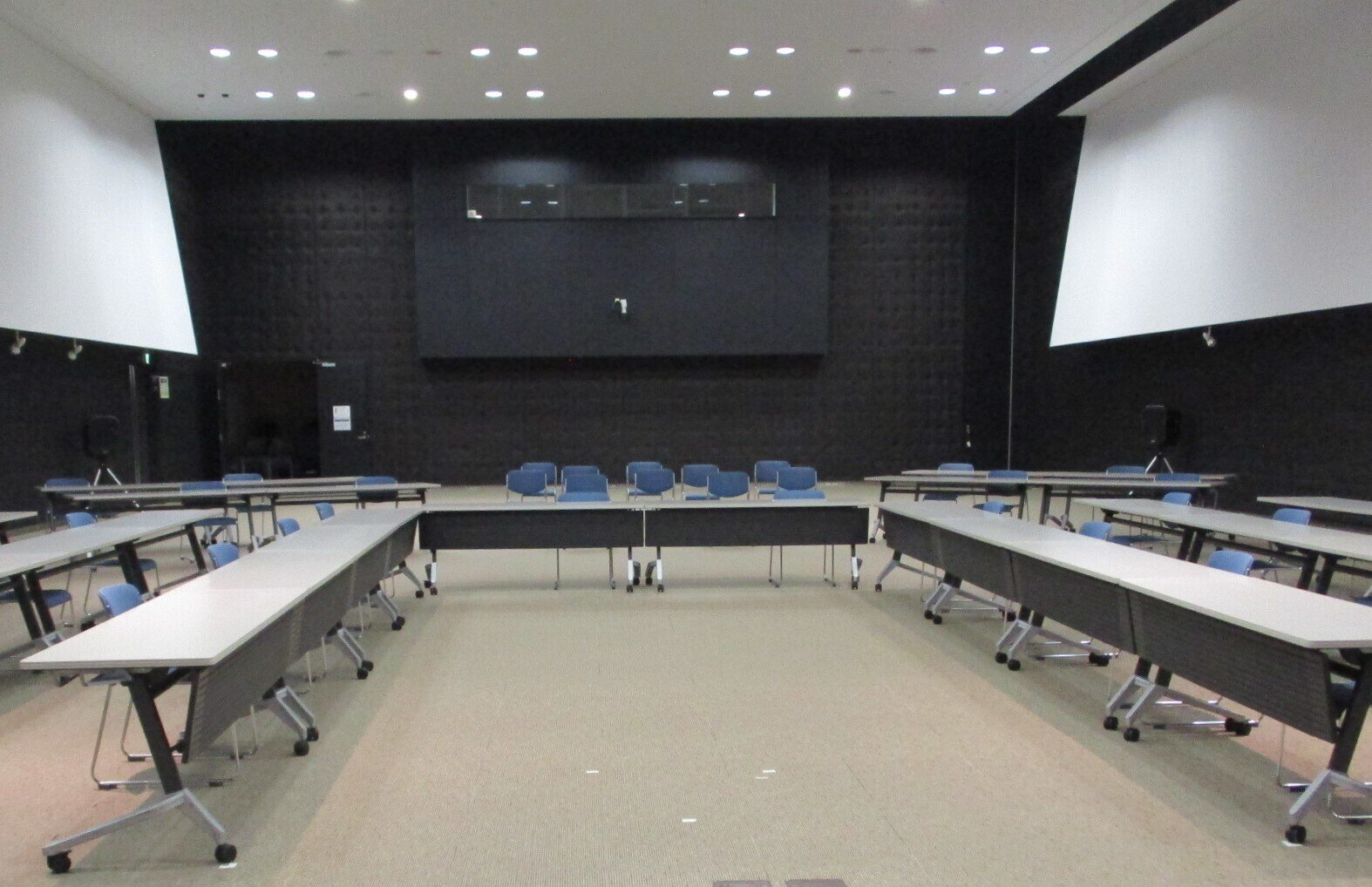
This series has looked at the efforts and vision of those involved in Woven City. For this article, we spoke with Woven by Toyota (WbyT) members hard at work handling various tasks for prospective residents, from applications to moving in or out, which includes these unusual information sessions.
Heart of Woven City
The people who will live in or visit Woven City are known as “Weavers.” When we dropped by in June, preparations were underway to welcome the first resident Weavers at the official launch this fall*.
* Woven City plans to begin accepting Weavers as visitors from the next fiscal year.
Those hoping to move into Woven City need to understand and embrace the purpose and concept of the city as a “living laboratory” that seeks to enhance “well-being for all”. Selection will depend on various factors, including individual preferences as well as the types of rooms WbyT can offer and the trials being conducted.
One of WbyT’s mottos is “Weavers Are the Heart of Woven City.”
Risako Kusu, who has been planning and organizing the Weavers (resident) recruitment website and the recent briefing, explains the mindset behind these words.
Kusu

Even if we have Inventors eager to create things, they cannot achieve this without Weavers—the city can’t exist without Weavers, that’s how important they are. That is the idea we have always tried to convey, from the very start of the application process through to the briefing sessions and beyond.
We’ve been consistent with this messaging since we first put out the call for residents.
While all the talk of a “living laboratory” inevitably turns the spotlight on Inventors and their creations, the city’s uniqueness stems from being able to obtain real feedback from everyday life.
That is why Weavers and Inventors are considered equally essential.
The WbyT team is working to share this message with Toyota staff and their families, as well as members of the general public who will one day call the city home.
Idea seeds close at hand
With Weavers being just as important as Inventors, the briefing we described earlier was designed to ensure that potential participants understand Woven City’s core concept, and to help them visualize living in the community and contributing to various demonstration trials.
The most eye-catching feature of these sessions is no doubt the lawn-covered floor. In fact, this idea was borrowed from elsewhere.
“We didn’t want to make it formal, and we wanted to give a sense of the vibe before people had set foot in Woven City.”
This was WbyT’s first such briefing, and although they had decided on the information to be shared, the “how” was a key point.
In particular, the team focused on households. The session was attended by individuals, couples, and families. Those who put up their hands as potential residents may already be familiar with the city or passionate about the project, but how do you ensure that partners and children who will also make the move are not left behind, and equally engaged? Kusu and the other WbyT members discussed various ideas that will help with public recruiting further down the line.
In the process, last fall the team set its sights close to home—their own office in Nihonbashi, Tokyo, which features the following space:
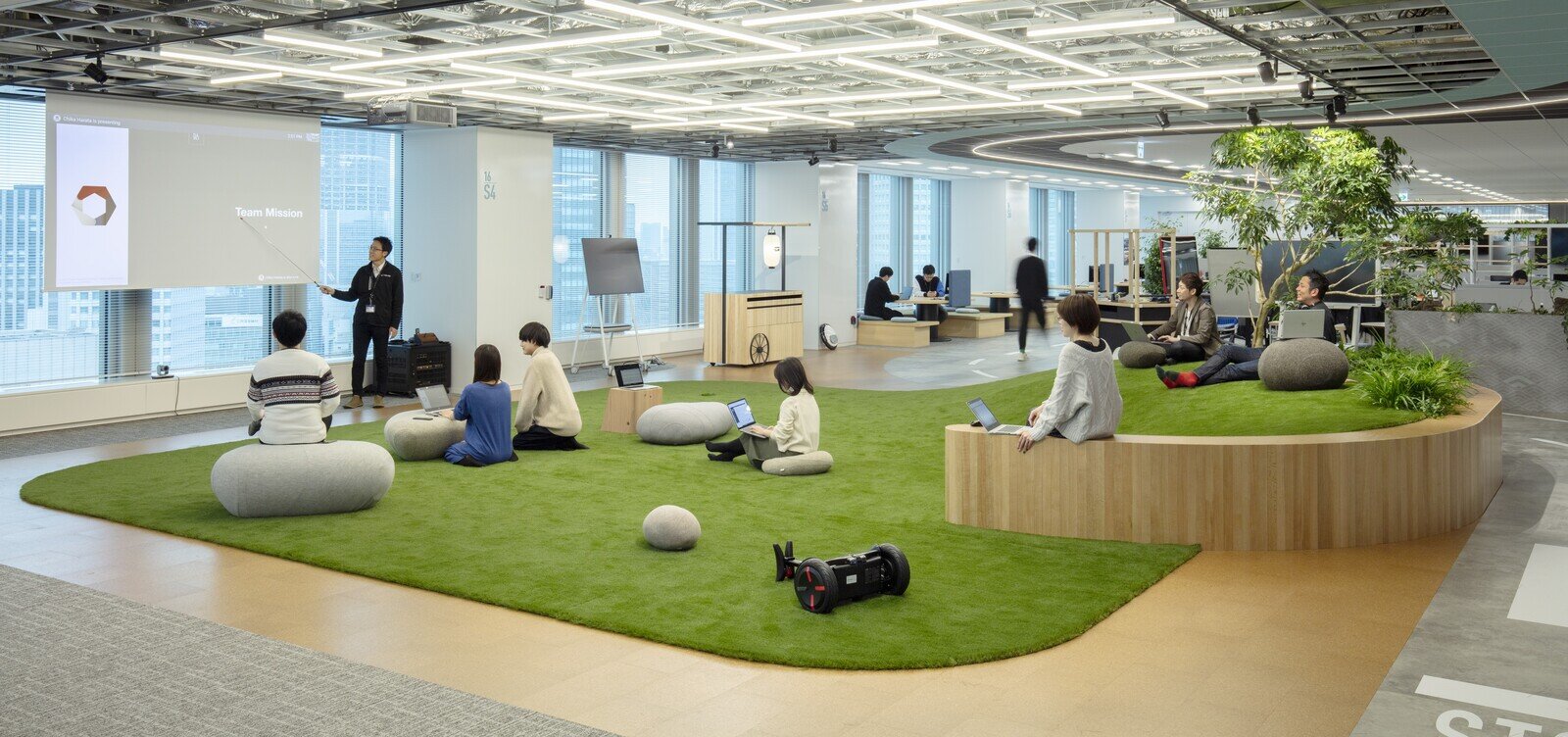
Of course, the office also has conference rooms where important meetings are held. At other times, however, staff can stretch their legs out on the grass for more candid and casual conversations.
“Our workplace is not overly formal, with a culture where you can talk about anything on your mind and work together across department lines to find solutions,” says Kusu. “I am confident that, even after the official launch, Woven City will retain the same friendly atmosphere. We wanted people to feel that at our sessions as well.”
Initially, the team had also thought of setting out tables and chairs, but then decided that sitting on grass would bring attendees closer together and allow them to relax while listening to the presentation. Rough images of the venue were drawn up, and things moved swiftly from there.
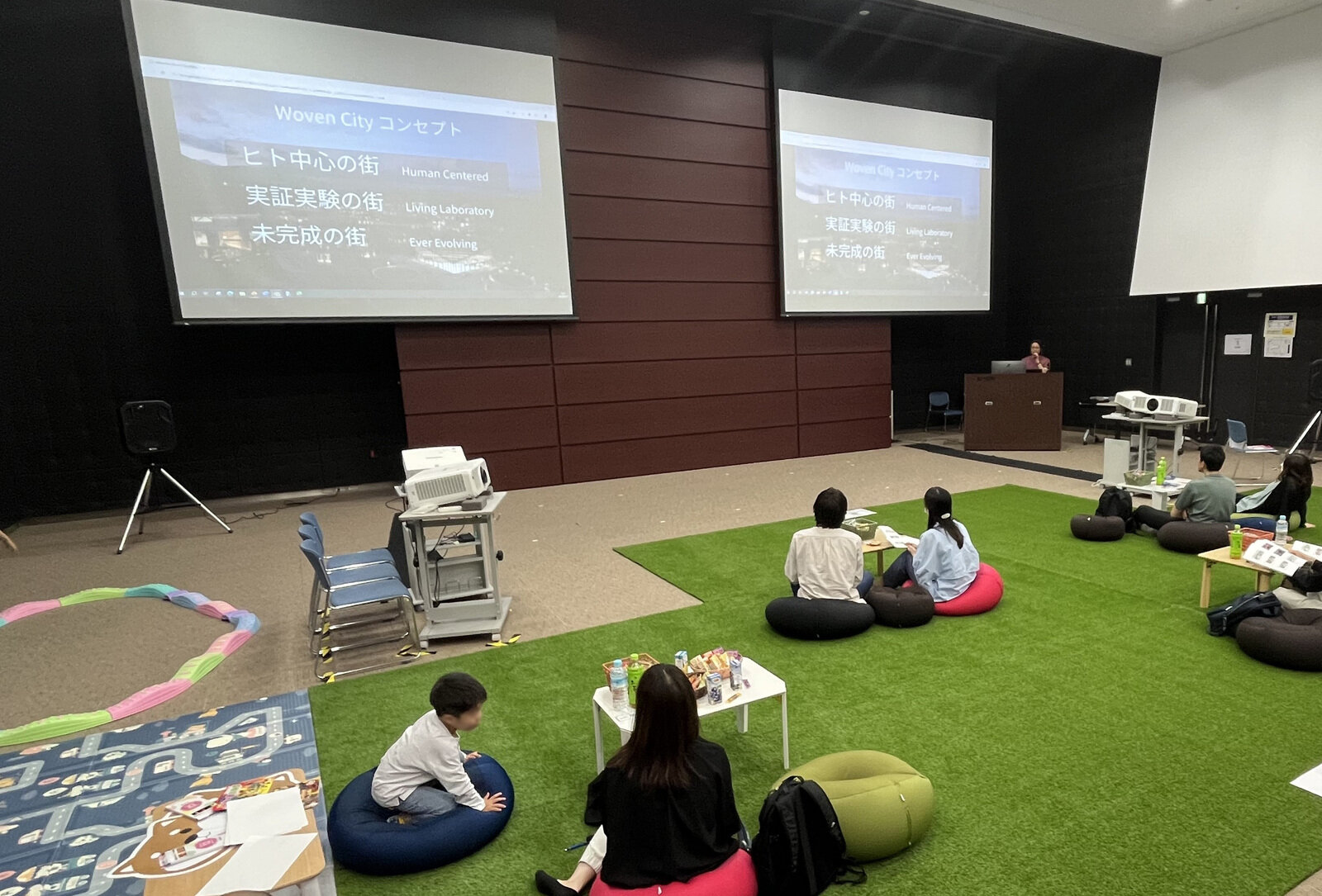
The briefing venue also provided a children’s space (bottom left), which “made it easier to relax and follow the discussion,” according to one participant.
From grass to road
The briefing was actually split across two venues, with an interactive session also running at the same time to offer a taste of Woven City. Let’s take a closer look.
Participants passed through a mock-up of the entry gates that will greet visitors at Woven City’s Welcome Center, as showcased in our previous article. Leaving behind the lawn of the info session, this venue had paths marked out in the form of a road—perfect for a test course for mobility.
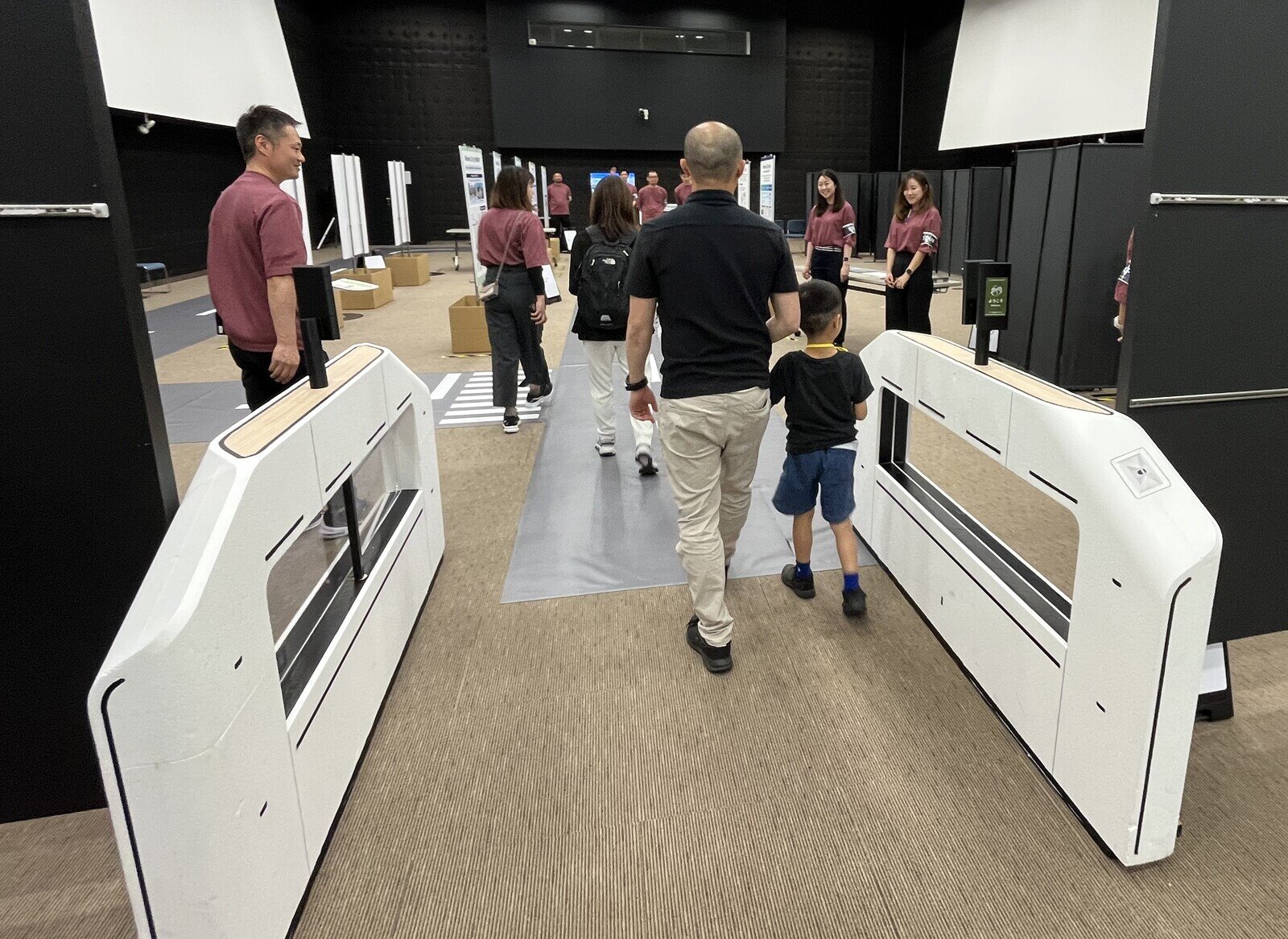
The entrance to the interactive session. Once through the mock-up entry gate, attendees followed a path indicated by mats resembling a road.
Inside the venue, participants found panels illustrating life in Woven City and its surrounding environment, as well as a chance to stroll the streets in virtual reality.
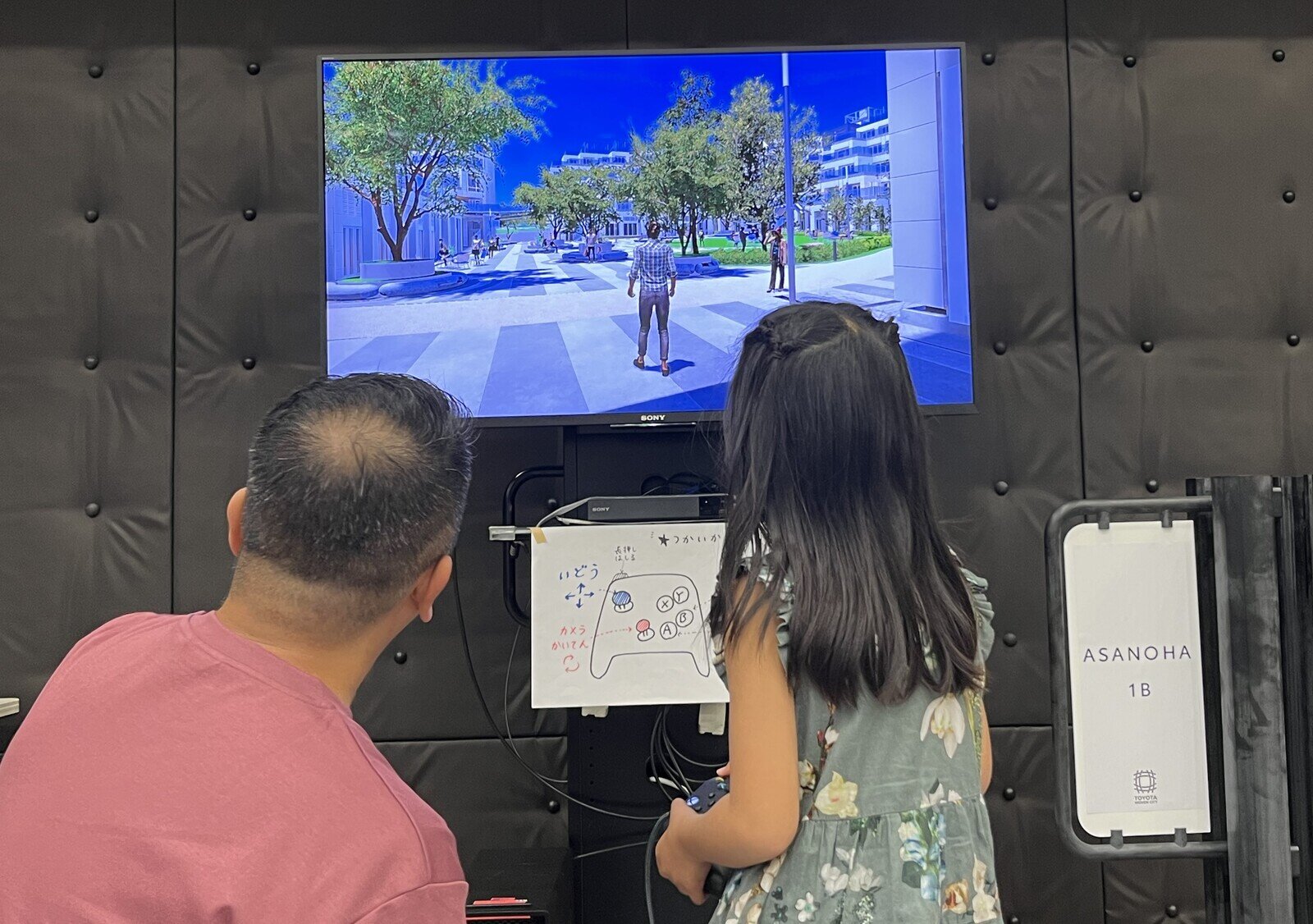
They experienced what it would feel like to encounter one of the transport robots that will move through Woven City’s residential areas, automatically detecting and avoiding people. The walkway where this took place was made a similar width to the shared corridors used by the city’s residents.
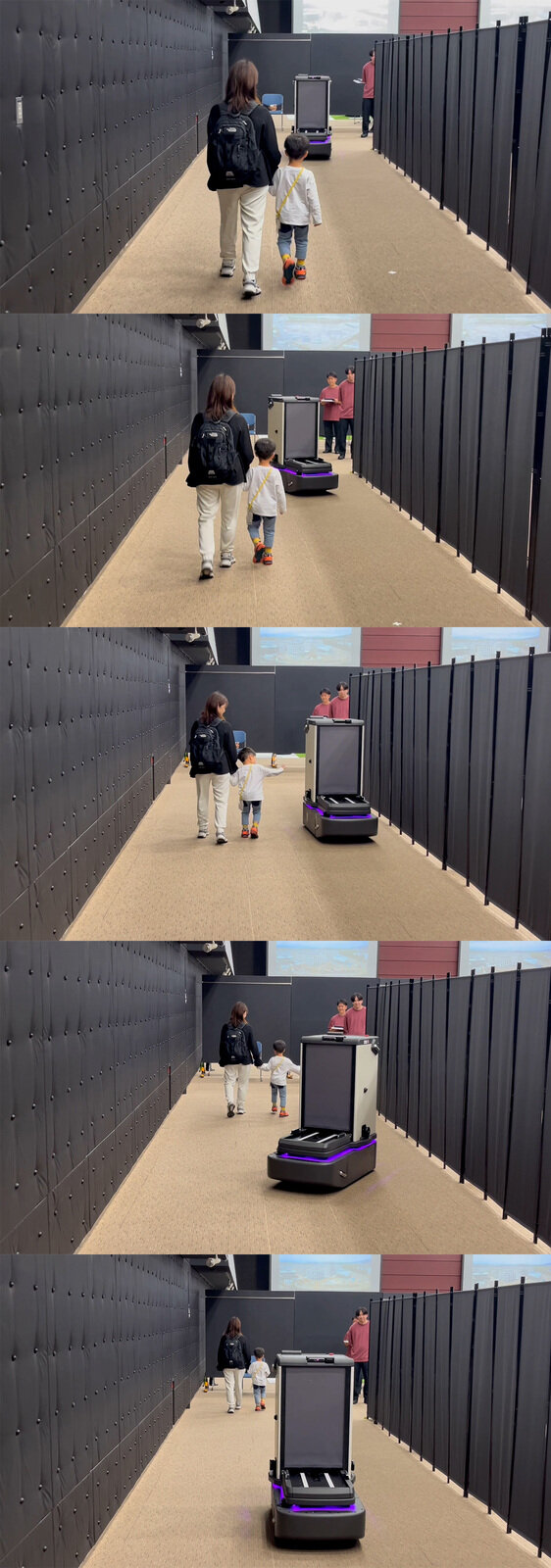
After the robot encounter, staff asked participants about their experience, giving them a sense of how they might take part in trials and provide feedback.
Toyota Times spoke with attendees, who said, “I would feel reassured if we could tell that the robot had noticed us (via some kind of signal).” Another added, “I’m worried whether a child on their own would be safe.” Such input is sure to drive the technology’s further evolution.
Atsushi Narita is part of the team responsible for designing the user experience (UX). He collaborates with Kusu’s team in putting together elements such as the briefing and interactive session. He explained the intent behind the two sides of the event.
Narita
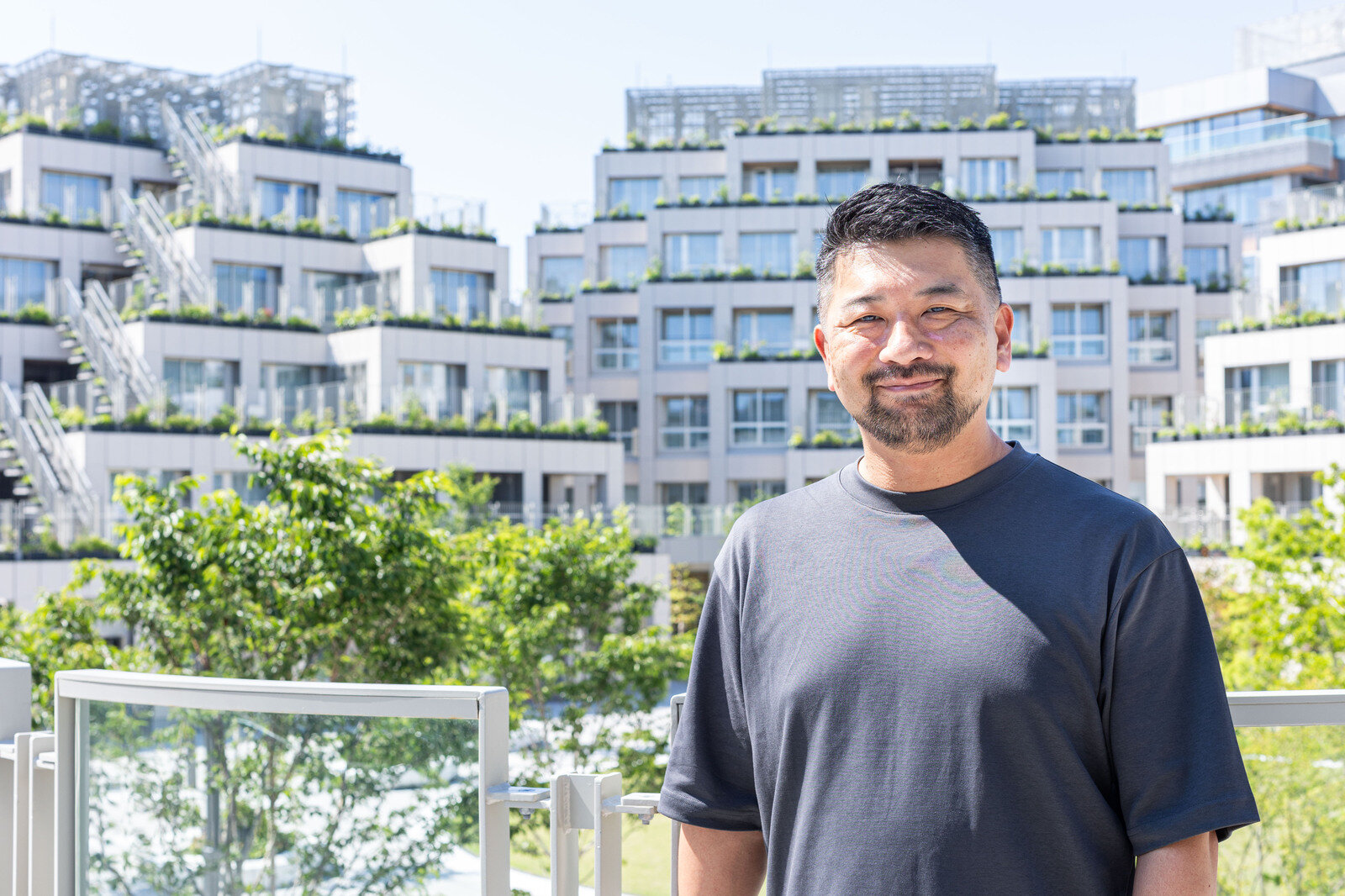
Collectively, we talked about what kind of relationship we, the people working in Woven City, want to create with the Weavers and Inventors. The underlying idea is that, rather than receiving Weavers as guests or customers, we will work together in co-creating the future of mobility in Woven City.
As much as possible, incorporating the feel of our office into the briefing and the atmosphere of the interactive session was about creating a relationship of acceptance as equal peers, rather than us talking down to the participants. I was really glad to see everyone leaving with smiles on their faces.
“Rather than receiving Weavers as guests or customers, we will work together in co-creating the future of mobility in Woven City” ——this sentiment was shared not only by the team designing the briefing and interactive sessions, but also by the members preparing to welcome Woven City’s residents.
Weavers’ buddies
So far, we have seen how the briefing and interactive sessions have been organized for prospective residents. Another team is also working to ensure the Weavers have a smooth first day when they arrive this fall.
Since February, this team has run through multiple rehearsals in Woven City, checking everything including the routes that will take Weavers to their rooms, directions to the parking areas, and access for moving companies.
Things that looked good in the planning stage did not necessarily fare well once the team got on the ground. Some even pointed out that the grim expressions would do little to make Weavers excited.
From May, WbyT also began “real-life tests” in which employees and their families came to live in Woven City for short stays of around a week. To date, nearly 100 people have taken part, helping to identify points of improvement from both the resident and operational perspectives.
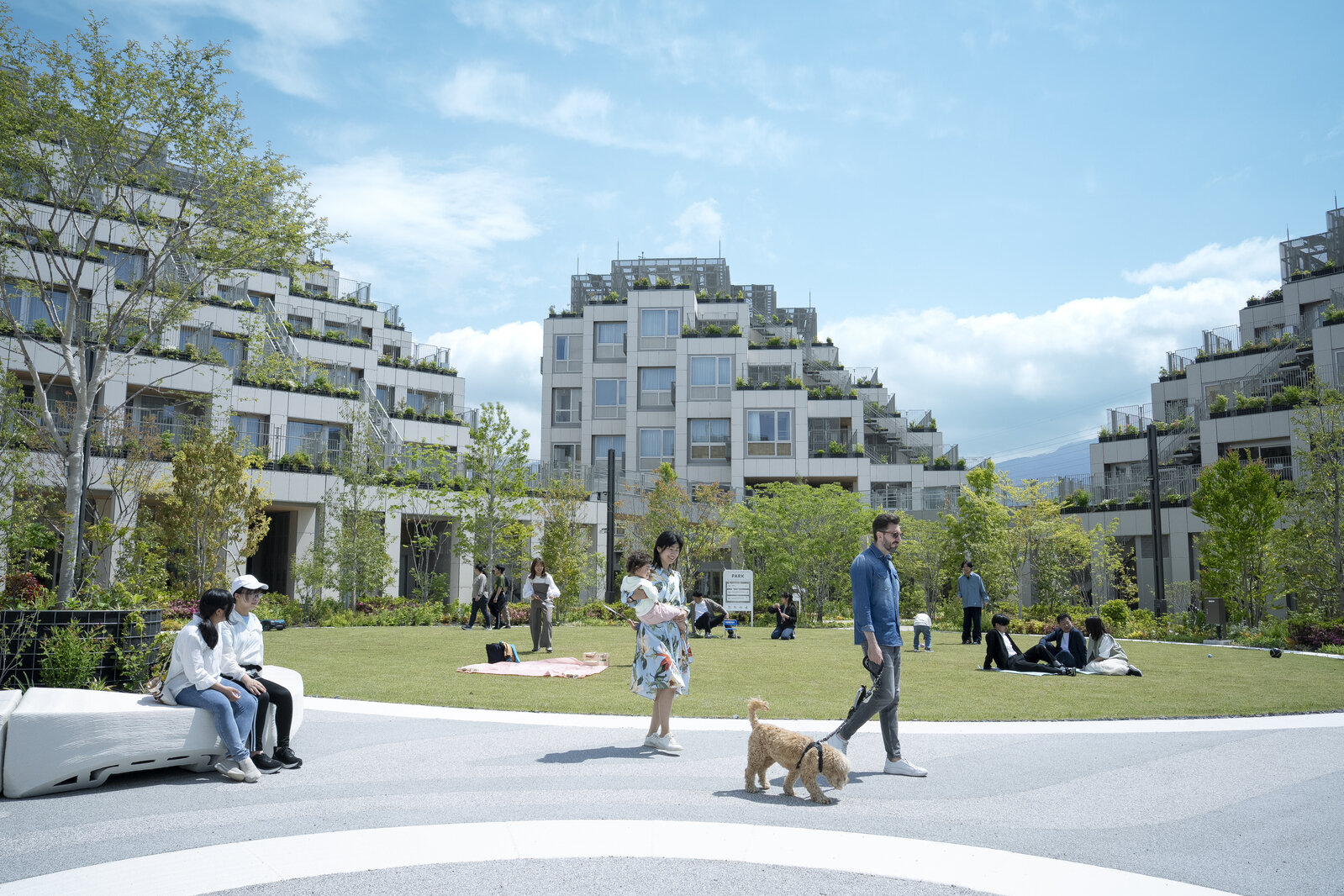
Real-life testing in progress
Shohei Iwata is part of the team preparing to welcome residents. During tests on location, he came to recognize that, rather than offering a mechanical response to each concern, it is important to see things from the other side.
Iwata
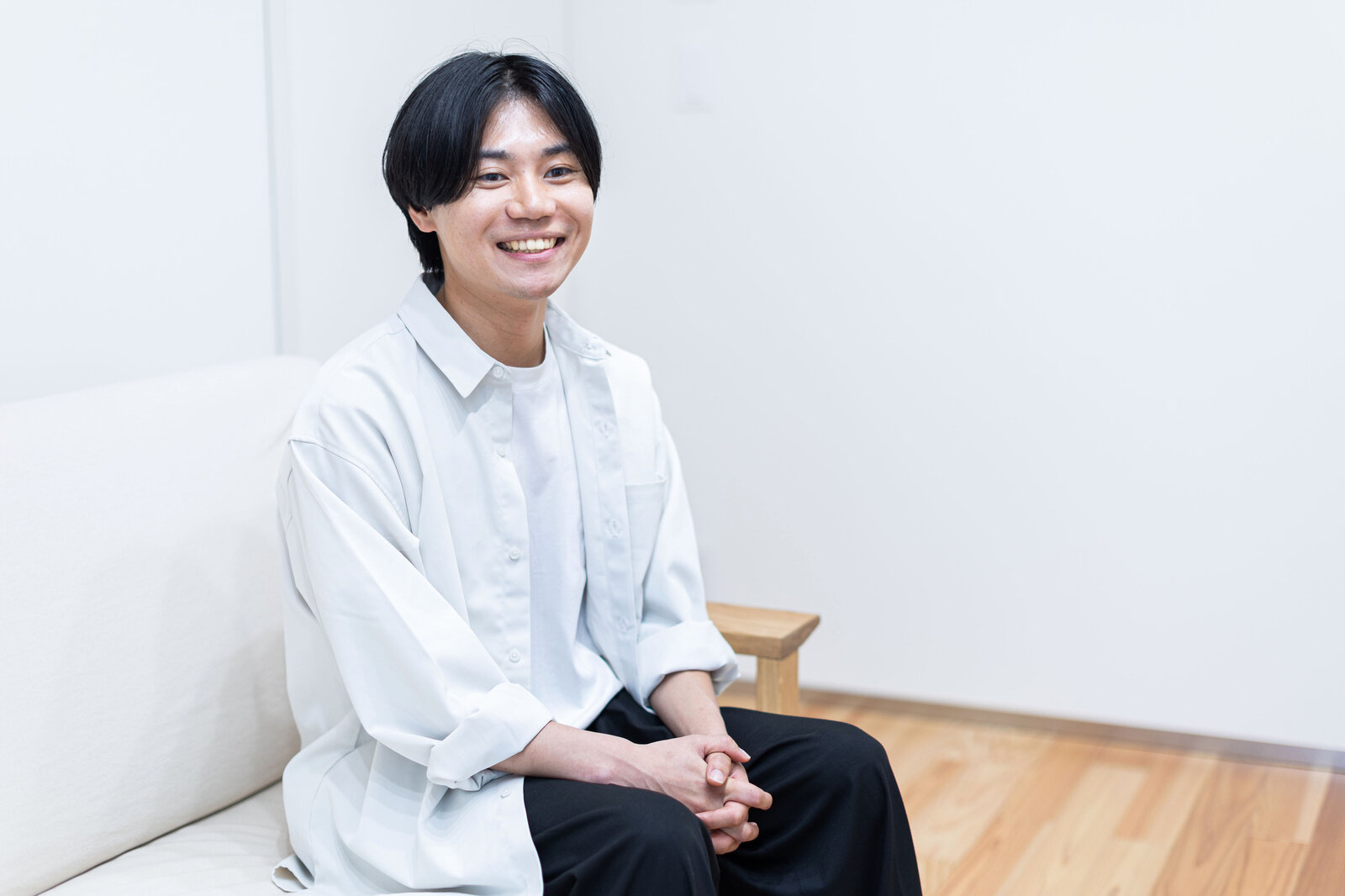
When I made an effort to figure out what lay at the root of their requests, people would tell me, “Yes, that’s it—that’s what I really need.”
I would love to serve as something like a buddy for the residents.
They will be coming here for the first time. Although this is a living laboratory, we’re going to start with something rather unrelated: building a relationship where people can come to us with any problems or worries from their daily lives. If we can resolve their concerns, they will be able to participate more in the demonstration trials, where they can experience first-hand the value of Woven City as an urban test course.
The real-life tests showed me that, if you engage with people earnestly, you can build a relationship that encourages them to open up and share their true feelings.
Once the Weavers have settled into their new life, Iwata and Narita’s teams have also been tasked with planning and operating the Woven City Weavers’ Center.
Woven City’s “community center”
“How do we get involved in the demonstration trials?” “What can I do to contribute?”
The Weavers’ Center is a facility set up to answer such questions from residents, and to offer support and peace of mind for life in Woven City.
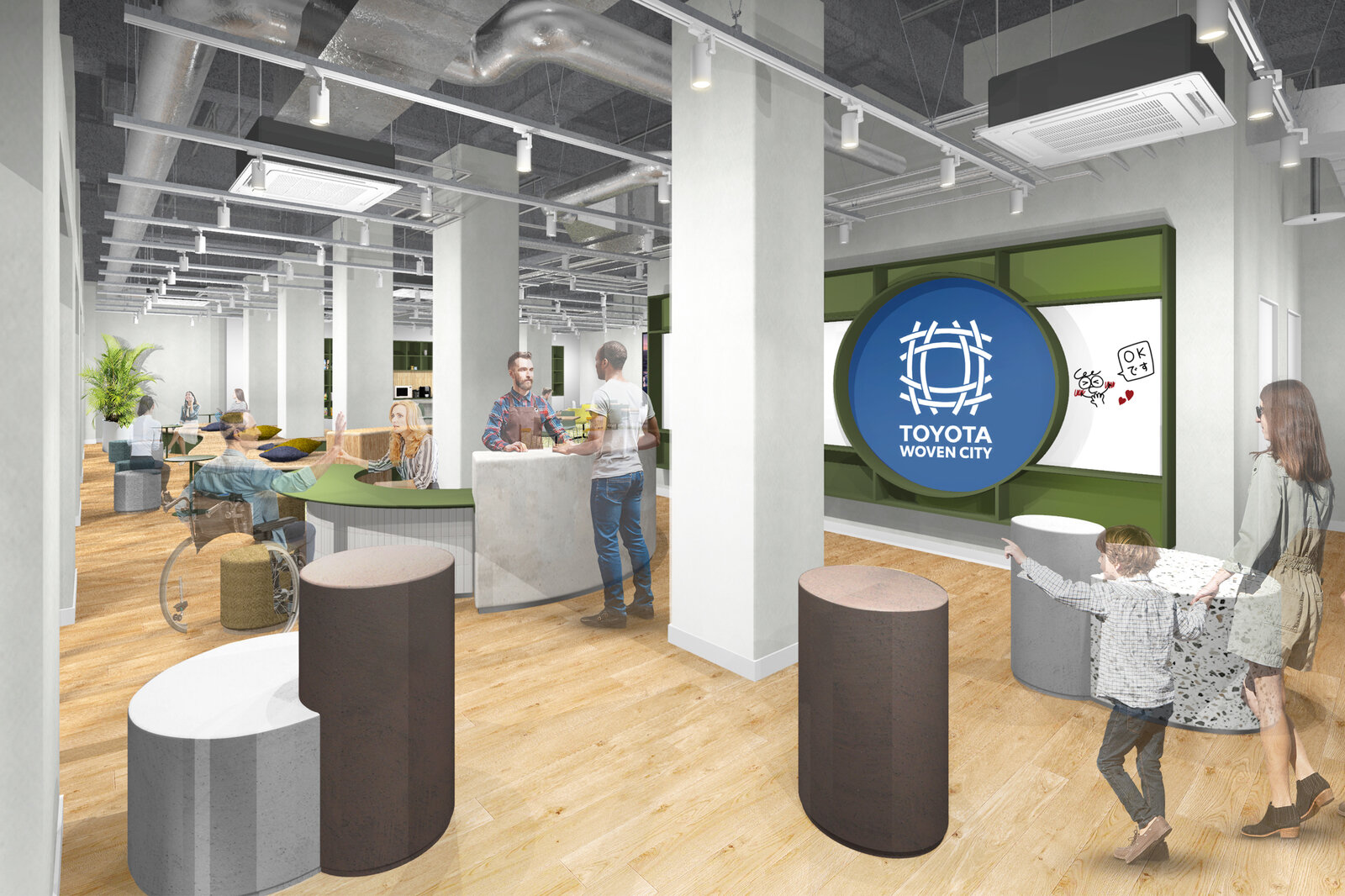
Concept images for the Weavers’ Center currently being planned
In addition to assisting those in need, it will also serve as something like a community center, where people can casually mingle—a place where Weavers can take a break and have a chat, or children can come to do their homework.
As Kusu explained, Weavers are a vital and indispensable presence in Woven City. The center will hopefully provide the support they need, encouraging Weavers to take the first step and participate in the city’s demonstration trials.
The plan is to equip the Weavers’ Center with a support desk for inquiries and consultations, along with information and bulletin boards to encourage interaction between residents.
Earlier in the article, we noted that Kusu, Narita, Iwata and their teams were hard at work handling everything from applications to helping residents move in or out, but they are also exploring the idea of maintaining alumni connections to the city after people depart.
Before long, residents will finally arrive and bring Woven City to life. When we asked Narita what he wants the city to become, he responded with a smile.
Narita
More than anything, I think it would be wonderful if Weavers and Inventors alike saw Woven City as their own place and proactively sought to make it an even better place to live.
If we can create an atmosphere where Weavers and Inventors are driven to continue producing new forms of mobility, I think that would be the ultimate co-creation relationship.
I hope Woven City becomes a place they consider their own.
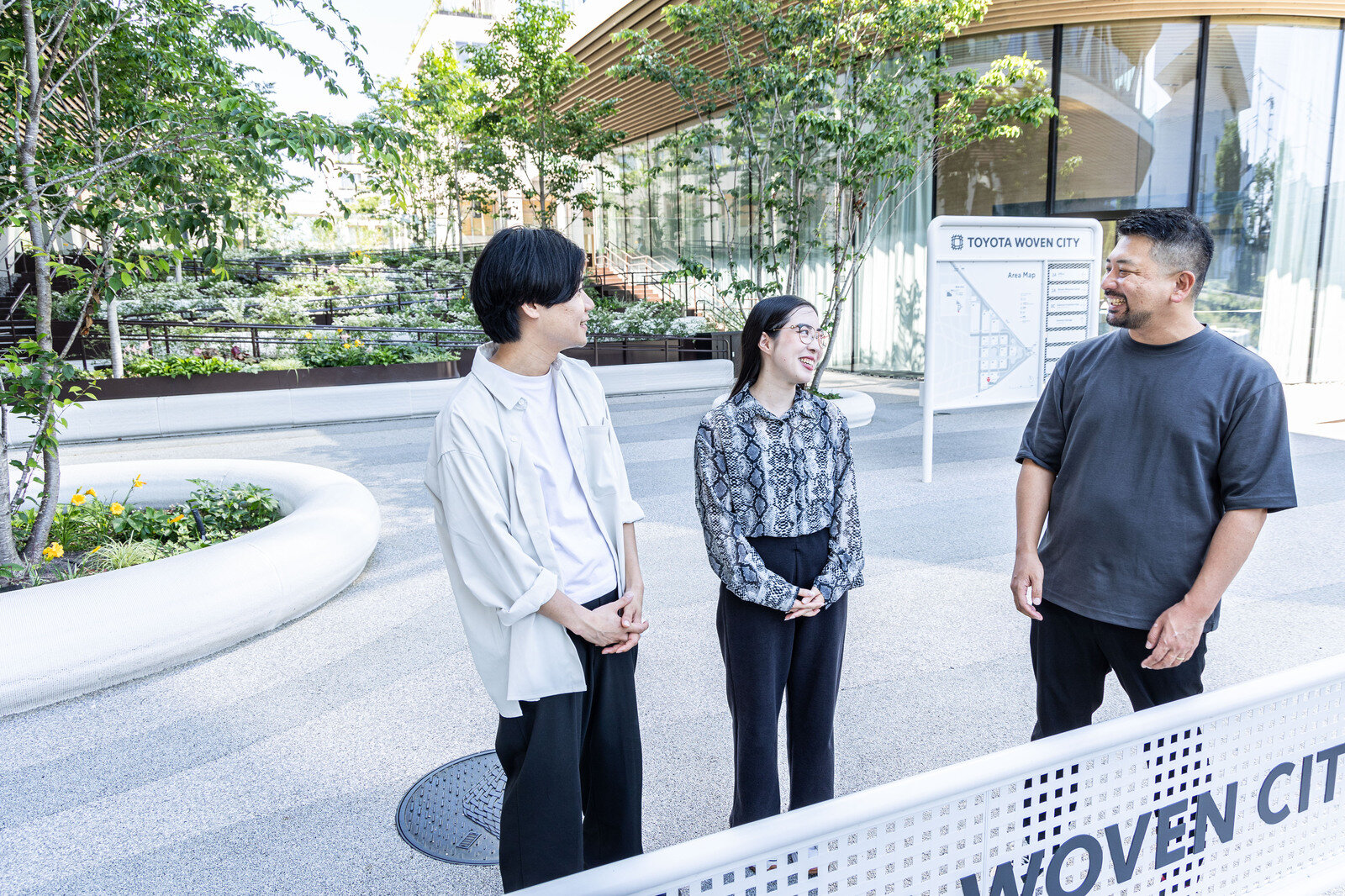

The sun had just begun to rise over the lush fairways of the Kalumbila Golf Course on July 12th, casting a golden glow on what would become a day of competition, strategic networking, and unforgettable moments. By 7:45 AM, the first swings of the Kalumbila Golf Day echoed across the course, marking the start of an event that seamlessly blended sport and business.
Leadership on the Fairway
Among the players was CFAO Mobility’s very own Country Delegate, Mr. Dino Bianchi, alongside Chief Operating Officer Mr. Peter Blomfield and Loxea Zambia’s COO, Mr. George Nonde. The trio wasn’t just there to play, they were there to lead, engage, and strengthen relationships.
“Golf is more than just a game,” remarked Mr. Bianchi between holes. “It’s about strategy, patience, and building connections. Today, we’re doing just that, while also showcasing CFAO Mobility’s commitment to Zambia’s corporate and sporting community.”
More Than Just a Game
The event was a hub for business discussions. At Stands No. 5 and 15, attendees explored Loxea Zambia’s corporate leasing solutions, with many taking advantage of the opportunity to arrange test drives with CFAO’s expert sales team.
The tournament’s success was amplified by the support of key sponsors; Absa, Fuchs, and Paratus, with special recognition going to FQM and Kalumbila for their unwavering partnership in promoting sports development in the region.
A Second Day of Swing and Innovation
The momentum didn’t stop there. On July 13th, the action shifted to the Lusaka Animal Welfare Golf Tournament, where CFAO Mobility once again took center stage, this time at Hole 14. at the Lusaka Golf Club.
A sleek lineup of vehicles turned heads, including:
- The Toyota Fortuner MHEV, a blend of power and efficiency.
- The rugged Toyota Land Cruiser Pick-Up, equipped with the formidable 2.8 GD engine.
- Lexus 450H model from Automark
The real thrill? Live test drives right on the course. Golfers and spectators lined up to get behind the wheel, guided by CFAO’s knowledgeable sales consultants.
“There’s nothing like feeling the power of these machines firsthand,” said one participant after test-driving the Land Cruiser Pick-Up. “It’s an experience that speaks louder than any brochure.”
A Weekend to Remember
As the final putts dropped and the last test drives concluded, one thing was clear: this wasn’t just a weekend of golf, it was a celebration of community, business, and innovation.
CFAO Mobility’s dual sponsorship reinforced its role not just as an automotive leader, but as a key player in Zambia’s corporate and social landscape. With strong partnerships, engaged leadership, and a passion for excellence, already looking ahead to the next tournament, where more connections will be forged, more partnerships will take shape, and, of course, more birdies will be scored.
Here’s to many more weekends like this one.
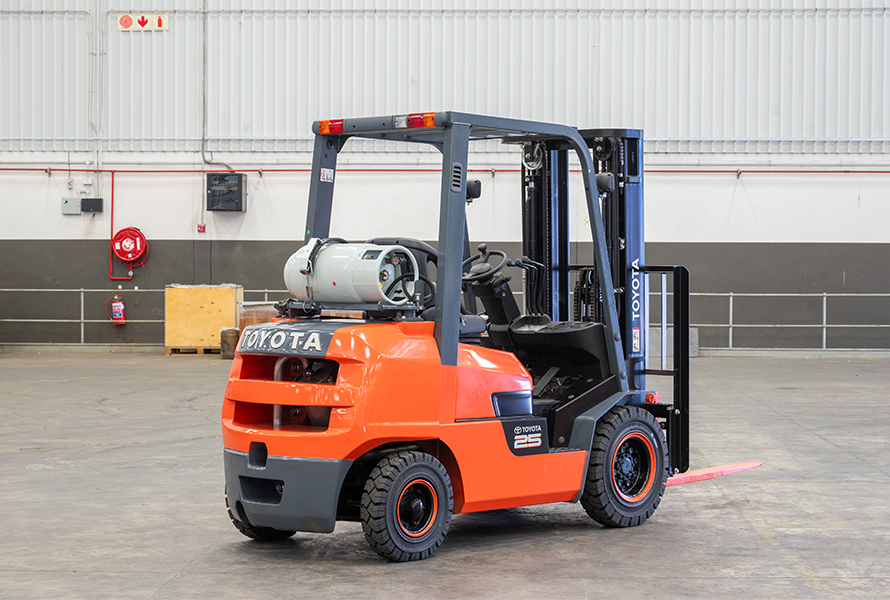
Why Buy When You Can Rent?
In today’s fast-paced business world, flexibility is key. Whether you are managing a warehouse, handling logistics, or boosting production, owning a forklift isn’t always the smartest move. High upfront costs, maintenance hassles, and long-term commitments can slow you down.
That’s where LOXEA by CFAO’s medium-term forklift rentals come in!
The Smarter Way to Power Your Operations
Need a reliable 2.5T or 3T Toyota forklift for 3 months, 6 months, or up to a year and more? LOXEA Zambia gives you top-quality equipment without the burden of ownership.
Why Rent with LOXEA ZAMBIA
- Cost-Effective– No huge upfront investment. Pay only for what you need and keep your cash flow strong.
- Zero Downtime– Our Toyota Forklifts are ready to go, no waiting, no delays.
- Flexible Terms– Rent for 3, 6, or 12 months and more with customizable plans.
- Reliable Performance– Toyota’s industry-leading durability keeps your operations running smoothly.
- Hassle-Free Service– Quick approvals, on-site delivery, and dedicated support.
Perfect for Any Business Need
- Seasonal demand spikes?Scale up without long-term commitments.
- Testing new equipment?Try before you buy—with no strings attached.
- Temporary projects?Get the right forklift for the job, exactly when you need it.
Unlock Agility with LOXEA Lease
At LOXEA Lease, we’re all about flexibility, efficiency, and affordability. Our goal? To keep your business moving—without the headaches of ownership.
Rent a Toyota Forklift Today & Stay Ahead!
Find Us: Plot No. 1637, Malambo Road, Industrial Area, Lusaka
Call Now: 0960768669 / 0971268000
Don’t let equipment costs hold you back. Rent smart, stay flexible, and keep your business rolling with Loxea!
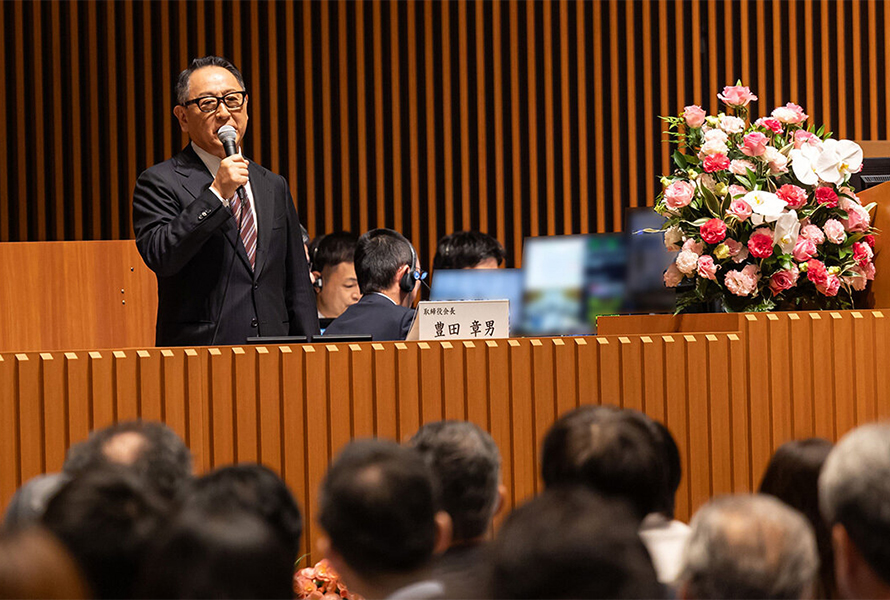
For this final article of our series on the 2025 General Shareholders’ Meeting, we would like to finish by sharing comments from Chairman Akio Toyoda.
Responding to a shareholder question about Toyota’s work on all-solid-state batteries, Executive Vice President Hiroki Nakajima touched on the company’s multi-pathway strategy. Chairman Toyoda also took up the microphone, reflecting the vast challenge that decarbonization poses for Toyota.
Chairman Toyoda’s comments after Q&A
Smiles for all
Chairman Toyoda
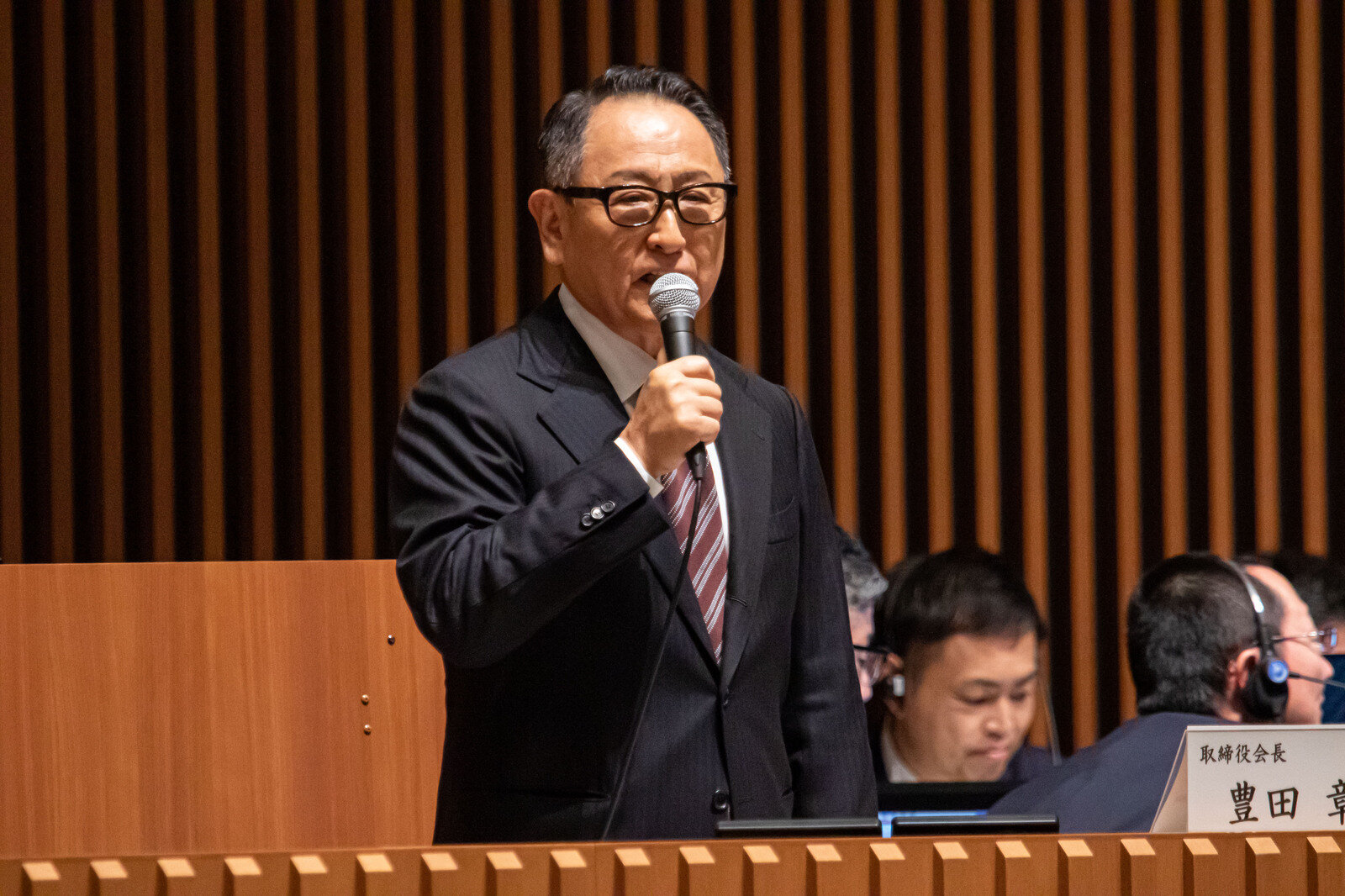
Global warming is a problem we must tackle as global citizens, and one which the automotive industry is confronting head-on.
From the outset, we have focused on the fact that our enemy is carbon, and “doing what we can right now.”
To date, we have sold a total of 27 million electric vehicles, mainly hybrids. These 27 million vehicles have reduced CO2 emissions by the equivalent of 9 million battery EVs (BEVs).
While the public discussion is always about BEVs or hybrids, at Toyota we have been steadily tackling global warming by doing whatever we can to lower CO2 emissions right now, knowing that our only enemy is carbon.
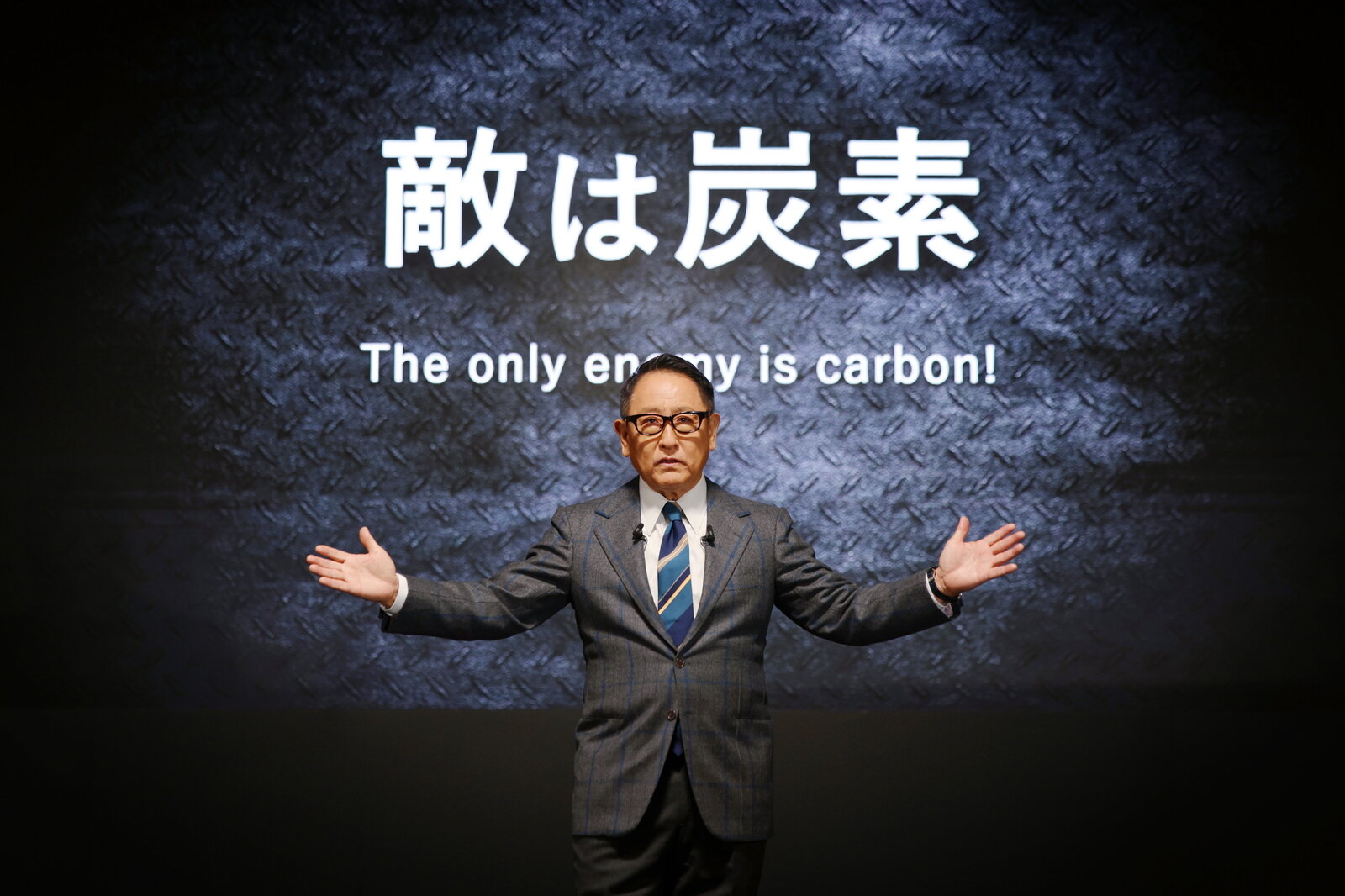
At Tokyo Auto Salon 2024, Chairman Toyoda emphasized that “the only enemy is carbon.” Photo: Noriaki Mitsuhashi/N-RAK PHOTO AGENCY
Why are we doing this? Looking around the world, each country has its own unique energy situation. Delivering “Mobility for All” is about serving every country, every road. All of us, from our leadership down, are working hard to ensure that no one is left behind.
Our ability to offer a full lineup of vehicles comes down to the teamwork of our partners: our dealers around the world, the suppliers who underpin our carmaking, equipment providers who keep our facilities running smoothly, materials vendors, and the people who transport our parts and finished products.
In these uncertain times, Toyota is not going to speculate. Instead, we are teaming up with others to prepare for the future.
Speculation doesn’t always turn out correct. Yet regardless of the situation, I believe that as long as we work together and prepare well, we are sure to make many people smile.
Today is the first time that more than 6,000 people have attended our shareholders’ meeting. Thank you very much for being here.
As our shareholders, the long-term support you provide, and your backing for our genba efforts, is what enables us to be prepared and ready. We look forward to your continued support.
Chairman Toyoda stressed the need for preparation over speculation. At a briefing on BEV strategy in 2021, he stated that “quickly adapting to changes is more important than trying to predict the future.” On that occasion, when a reporter asked whether Toyota would shift to BEVs or remain committed to its multi-pathway strategy, Chairman Toyoda replied:
“Once we identify market and customer trends, we swiftly follow them. We believe this boosts the company’s competitiveness, and above all, is the surest way for us to survive.”
Rather than narrowing down the choices, the company seeks to meet customer needs with a full global lineup. In an age with no right answers, being ready to swiftly adapt to change is also Toyota’s survival strategy.
The 2025 General Shareholders’ Meeting drew a record 6,752 attendees. In front of the assembled shareholders, Chairman Toyoda reiterated his determination to pursue carbon neutrality without leaving anyone behind.
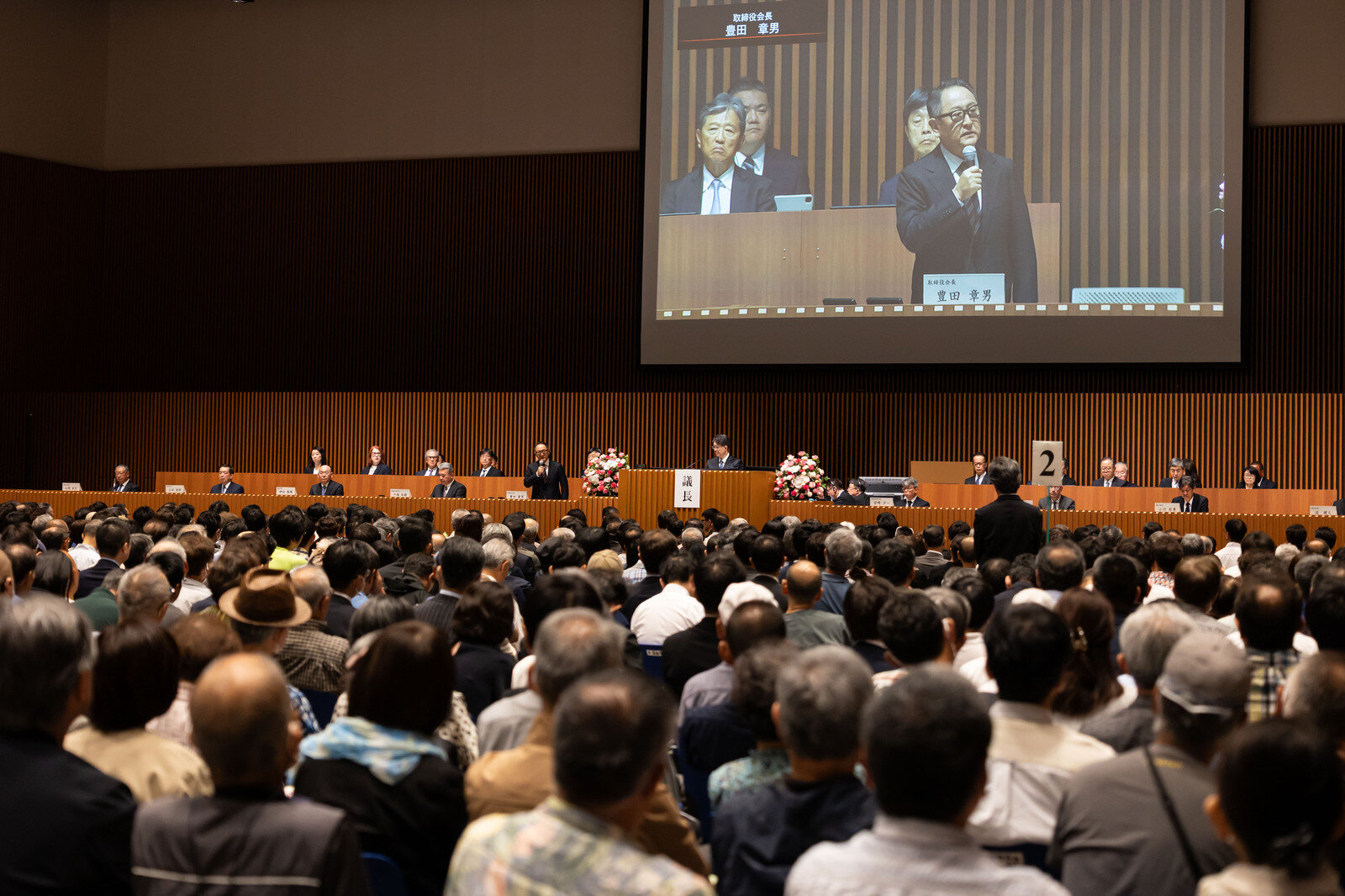
The next day, it was revealed that Chairman Toyoda was re-elected to Toyota’s board with 96.72% approval, nearly 25 points higher than last year’s 71.93%.
Source: https://toyotatimes.jp/

